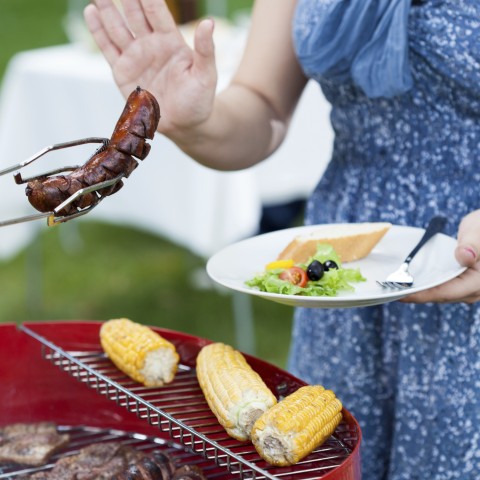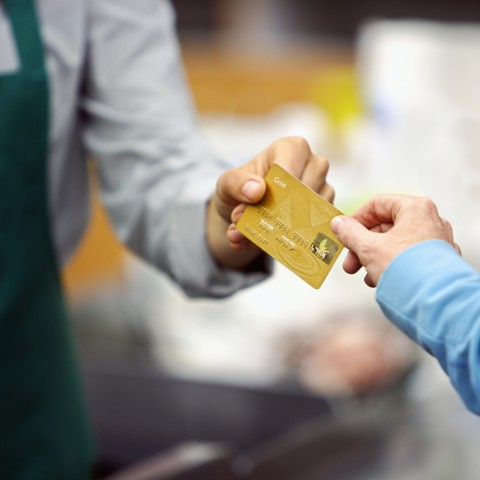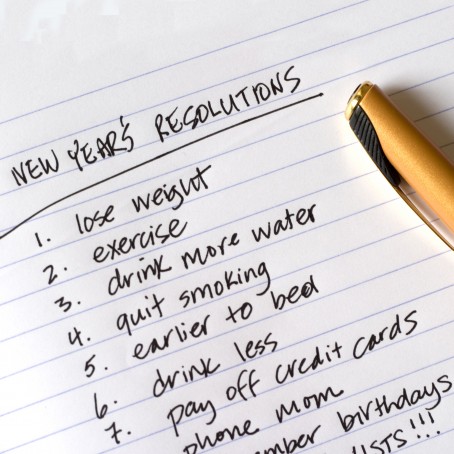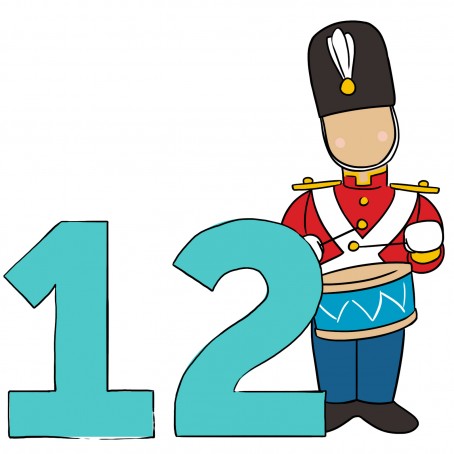
Whether you’ve just started learning Finnish or have a lot of lessons under your belt already, grammar is something you’ll keep coming back to throughout your studies. Finnish grammar, in particular, is best learned in smaller chunks through continuous exposure and lots of repetition.
If you’re a beginner, our guide will give you a thorough introduction to Finnish grammar. Don’t worry about taking everything in at once—just focus on a few of the most relevant rules and take it from there! And if you’re more advanced in your studies, you can use our guide as a handy summary page to revisit whenever you need a refresher on a certain grammar point.
We’ll introduce you to the most important Finnish grammar rules, from verb conjugation to noun cases. After a quick overview, we’ll move on to more-specific aspects of the language. Feel free to skip the first section if you’re already familiar with basic Finnish grammar.
- To dive deeper into the Finnish language, visit our Free Finnish Resources page. Here, you’ll find info on things like basic grammar and pronunciation.
 Table of Contents
Table of Contents
- Finnish Grammar for Beginners
- Vowel Harmony and Consonant Gradation
- Mastering Finnish Verbs
- Noun Cases
- Lopuksi
1. Finnish Grammar for Beginners
So, what can you expect when you begin learning Finnish grammar?
For starters, Finnish is a Finno-Ugric language, and thus not related to Indo-European languages like English, French, and German. This means that many aspects of Finnish grammar may come as a surprise to new learners. For example, Finnish has no definite or indefinite articles, grammatical gender, or future tense.
Finnish is an Agglutinative Language
“What is an agglutinative language?” I hear you ask.
It means that a lot of information in Finnish is conveyed by inflecting words (adding one or more suffixes to the word stem), instead of relying extensively on grammatical particles such as “of” and “from.” Inflection applies to all nominals (nouns, adjectives, numerals, and pronouns) as well as verbs.
Take a look at this example:
- Juoksentelisinkohan. (“I wonder if I should run around.”)
Thanks to a bunch of suffixes, this single Finnish word can convey all the information expressed by an entire English sentence. However, you’ll be glad to know that this example is rather extreme. Typically, you only need to worry about one or two suffixes at a time.
Introduction to Finnish Verbs
We’ll revisit verbs later on this page, but for now, this is what you need to know about Finnish verbs:
- Finnish verbs are conjugated.
- There are six persons corresponding to six personal suffixes.
- There are four tenses.
- There are four moods.
- There are two voices: active and passive.
- Verbs are usually divided into six types based on how they look in their basic form and how they behave when inflected.
The Basic Word Order
The basic word order in Finnish is the very same one you’re already familiar with as an English speaker: subject-verb-object (SVO).
Here’s the subject – verb – object order in action:
- Heikki juo kahvia. (“Heikki drinks coffee.”)
In English, the word order (usually) allows you to identify the subject and the object of a sentence. In contrast, the subject and object are identified by their case markings in Finnish sentences. This makes the Finnish sentence structure much more flexible.
You can add strong emphasis to a specific word by placing it at the beginning of your sentence. For example, you could stress that Heikki is drinking coffee as opposed to tea:
- Kahvia Heikki juo. (“Heikki drinks coffee.”)
We talk more about Finnish word order in our Talking Nationality in Finnish lesson on FinnishPod101.com.

“Heikki drinks coffee” is an example of the SVO word order.
2. Vowel Harmony and Consonant Gradation
Certain Finnish grammar rules exist to make the pronunciation easier, and it’s good to be aware of these rules from the beginning.
Vowel Harmony
There are three Finnish vowel groups: front, back, and neutral.
| Front vowels | Back vowels | Neutral vowels |
| Ä, Ö, Y | A, O, U | I, E |
The rule of thumb: Neutral vowels will happily hang out with any other vowel within a word, while front and back vowels wouldn’t be caught dead in each other’s company. This rule applies to individual words as well as to any suffixes that are added.
As you can see in these examples, each word contains only front or back vowels:
- Käärme (“Snake”)
- Ankkuri (“Anchor”)
If your word contains only neutral vowels, choose the suffix with front vowels:
- Tie (“Road”)
- Tiestä (“Of the road”)
There are a few exceptions to vowel harmony: both front and back vowels can appear in compound words and loanwords:
- Silmälasit (“Eyeglasses”), A compound word
- Synonyymi (“Synonym”), A loanword
When inflecting a compound word, look at the last individual word—lasit (“glasses”) in the above example—to choose the correct suffix.
Consonant Gradation
This is a difficult concept in Finnish grammar for foreigners, so we’ll go into some detail on this.
When words are inflected, the word stem may change: consonants may disappear, be doubled, or be replaced with other consonants. This phenomenon is called consonant gradation (or the KPT rule), and it applies to nominals and certain verb types. While it may seem unnecessarily cruel from a language learner’s point of view, the changes are actually there to make the Finnish words easier to pronounce!
The basic rule: Consonants in open syllables (syllables that end in a vowel) are “strong.” Consonants in closed syllables (syllables that end in a consonant) are “weak.”
For example, words with plosives (k, p, t) often change from strong (-kk-, -pp-, -tt-) to weak grade (-k-, -p-, -t-) when words are pluralized:
- Takki, Takit (“Jacket,” “Jackets”)
- Kaappi, Kaapit (“Closet,” “Closets”)
- Rotta, Rotat (“Rat,” “Rats”)
The table below shows the different types of changes that can take place when you inflect Finnish words. Note that the changes can happen in either direction. For example, the nominative of osoite (“address”) is weak but becomes strong in the t-plural: osoitteet (“addresses”).
| Strong | Weak | Example (nominative, t-plural) |
| -kk- | -k- | kakku, kakut (“cake,” “cakes”) |
| -pp- | -p- | nappi, napit (“button,” “buttons”) |
| -tt- | -t- | hattu, hatut (“hat,” “hats”) |
| -k- | – | sika, siat (“pig,” “pigs”) |
| -p- | -v- | leipä, leivät (“a loaf of bread,” “loaves of bread”) |
| -t- | -d- | taito, taidot (“skill,” “skills”) |
| -nk- | -ng- | kaupunki, kaupungit (“town,” “towns”) |
| -mp- | -mm- | lampi, lammet (“pond,” “ponds”) |
| -lt- | -ll- | silta, sillat (“bridge,” “bridges”) |
| -nt- | -nn- | ranta, rannat (“beach,” “beaches”) |
| -rt- | -rr- | parta, parrat (“beard,” “beards”) |
You can read about Finnish consonant gradation in more detail on Wikipedia.

Vowel harmony and consonant gradation streamline Finnish pronunciation.
3. Mastering Finnish Verbs
You can’t have a complete sentence without verbs! Here, we’ll cover several Finnish language grammar rules related to verbs and their usage. Buckle up.
Conjugation Basics
Six personal suffixes are used in Finnish. These suffixes are added to the verb stem. The best thing about personal suffixes is that they’re exactly the same in all tenses and moods!
Let’s conjugate the verb muistaa (“to remember”). The personal endings are added to the verb stem muista-.
| Person | Suffix | Example |
| minä (“I”) | -n | Minä muistan. (“I remember.”) |
| sinä (“you”) | -t | Sinä muistat. (“You remember.”) |
| hän (“he” / “she”) | -v or -ø | Hän muistaa. (“He/she remembers.”) |
| me (“we”) | -mme | Me muistamme. (“We remember.”) |
| te (plural “you” / formal “you”) | -tte | Te muistatte. (“You remember.”) |
| he (“they”) | -vat or -vät | He muistavat. (“They remember.”) |
The third person singular (hän) is marked by a long vowel. If there are already two vowels at the end of the stem, the third person form equals the verb stem. For example, the stem of the word juoda (“to drink”) is juo- which is also the third person singular form:
- Hän juo. (“He/she drinks.”)
Because the personal endings tell us who is performing the action, it’s possible to drop the personal pronouns in first and second person. For example:
- (Minä) opiskelen suomea. (“I study Finnish.”)
The Six Verb Types
While the personal endings of verbs never change, the same is not true about verb stems. Typically, verbs are divided into six types depending on their basic form and the changes they undergo when conjugated. Knowing which verb type you’re looking at will help you work out how to conjugate it!
| Verb Type | Infinitive ending | Example |
| Type 1 | -va/-vä | lukea (“to read”) |
| Type 2 | -da/-dä | syödä (“to eat”) |
| Type 3 | -la/-lä, -na/-nä, -ra/-rä, -sta/-sta | tulla (“to come”) |
| Type 4 | -vta/-vtä | siivota (“to clean”) |
| Type 5 | -ita/-itä | valita (“to choose”) |
| Type 6 | -eta/-etä | vanheta (“to age”) |
When conjugating verbs, follow these steps:
1. Identify the verb type. For example, rakastaa (“to love”) has a -va ending and is a Type 1 verb.
2. Follow the rules for this verb type to derive the verb stem. For Type 1 verbs, you need to remove the final -a or -ä. Therefore, the stem of rakastaa is rakasta-.
3. Add your personal ending to the stem. For first person singular, add -n: rakastan (“I love”).
4. Remember that consonant gradation applies to verb types 1, 3, and 4.
You can dive deeper into Finnish verb types and conjugation on Wikipedia.
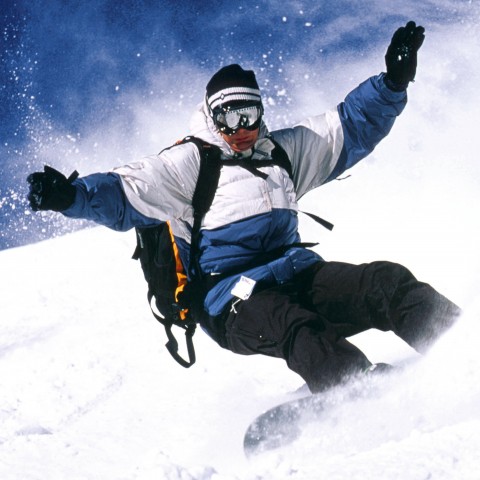
Lumilautailla (“to snowboard”) is a Type 3 verb.
Tense
In Finnish grammar, verbs also conjugate for the four indicative tenses: present, imperfect, perfect, and pluperfect.
1. The Finnish present tense describes timeless, continuing, and future actions. It’s formed by adding a personal ending to the verb stem.
- Minä ostan (“I buy”)
2. The imperfect tense corresponds to the English simple past tense. It is formed by adding the affix -i- (sometimes -si-) before the personal suffix.
- Minä ostin (“I bought”)
3. The perfect tense corresponds to the English present perfect. It’s formed using the verb olla (“to be”) as an auxiliary verb and the past active participle form of the main verb.
- Minä olen ostanut (“I have bought”)
4. pluperfect tense corresponds to the English past perfect. We use olla (“to be”) as an auxiliary verb again, but in its past form.
- Minä olin ostanut (“I had bought”)
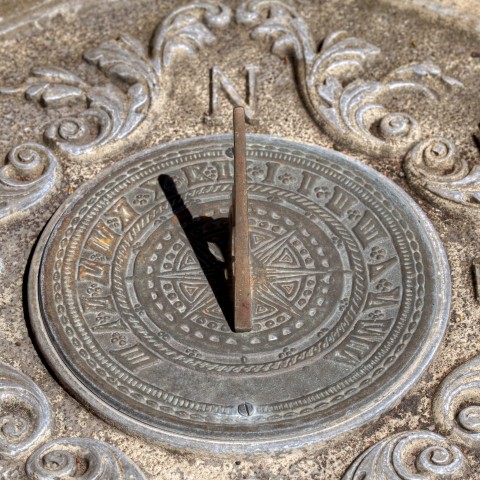
Tenses deal with the timing of actions.
Moods
There are four moods in modern Finnish: indicative, conditional, imperative, and potential.
1 . Indicative is the ‘basic’ form used in most statements and questions.
2. Conditional corresponds to actions that may or may not happen, and it appears in conditional sentences and polite requests. The affix that marks a conditional form is -isi-.
- Tulisin, jos pyytäisit. (“I would come, if you asked.” / Literally: “I would come, if you would ask.”)
- Haluaisin teetä. (“I would like some tea.”)
3. Imperative expresses commands. The most commonly used forms of the imperative are the active, second person imperatives.
- Juokse! (“Run!”) Singular
- Älä juokse! (“Don’t run!”) Singular
- Juoskaa! (“Run!”) Plural
- Älkää juosko! (“Don’t run!”) Plural
4. Potential expresses actions that are likely but not certain. It isn’t used mu4. ch in modern Finnish, but may appear in newspaper articles and such. The typical conditional affix is -ne-, added before the personal ending.
- Minä laulanen. (“I will probably sing.”)
Voice
In Finnish, there are two voices: active and passive. Active verbs are linked to the six persons and always have a personal ending, while there is only one form of the passive. Passive is used in Finnish when the agent is a human who is either unknown or unimportant:
- Koulussa opetetaan matematiikkaa. (“Math is taught in school.”)
Passive can also be used when making suggestions:
- Mennäänkö rannalle? (“Shall we go to the beach?”)
Finally, passive can replace the first person plural active form in informal, spoken Finnish:
- Me asutaan Kotkassa. (“We live in Kotka.”)
Negation
In Finnish, the word ei (“no”) behaves like a verb (hence, it’s called a negative verb). It gets the same personal endings as regular verbs:
- en, et, ei, emme, ette, eivät
To form a negative sentence, use the negative verb with the stem of the main verb. For example:
- Minä en puhu. (“I don’t speak.”)
In the imperfect, perfect, and pluperfect tenses, the negative verb is paired with the past active participle form of the main verb. The auxiliary verb stem ole is also added to the negative imperfect and ollut (singular) or olleet (plural) to the negative pluperfect.
The negative imperfect:
- Minä en puhunut. (“I didn’t speak.”)
- Me emme puhuneet. (“We didn’t speak.”)
The negative perfect:
- Minä en ole puhunut. (“I haven’t spoken.”)
- Me emme ole puhuneet. (“We haven’t spoken.”)
The negative pluperfect:
- Minä en ollut puhunut. (“I hadn’t spoken.”)
- Me emme olleet puhuneet. (“We hadn’t spoken.”)

Hän ei puhu. (“He doesn’t speak.”)
The First Finnish Verb to Learn
Olla (“to be”) is an essential verb to learn because you’ll be using it again and again. It also happens to be a very rare example of a Finnish irregular verb! This is how to conjugate it:
- minä olen, sinä olet, hän on, me olemme, te olette, he ovat
- For example: Minä olen iloinen. (“I am happy.”)
Olla can also be used as an auxiliary verb in a compound tense, as we’ve seen:
- Sinä olet asunut Suomessa. (“You have lived in Finland.”)
There is no separate possession verb in Finnish, so olla performs double-duty as “to be” and “to have.” When we want to say “to have” in a sentence, we use the adessive case of a noun with the third person singular form of olla. Like this:
| minulla on | sinulla on | hänellä on | meillä on | teillä on | heillä on |
| “I have” | “you have” | “he/she has” | “we have” | “you have” | “they have” |
For example: Minulla on kissa. (“I have a cat.” / Literally: “On me is a cat.”)
You’ll also come across the verb olla used this way when talking about certain states of being. For example:
- Sinulla on nälkä. (“You are hungry.” / Literally: “On you is hunger.”)
- Meillä on jano. (“We are thirsty.” / Literally: “On us is thirst.”)
Can’t get enough of Finnish verbs? Look up all those lovely affixes and conjugation rules on Wikipedia, and check out our list of Vocabulary for the 25 Most Commonly Used Verbs.
4. Noun Cases
Finnish noun cases have a reputation of being fiendish to learn, but all you really need is a lot of patience.
Types of Noun Cases
There are fifteen total Finnish noun cases. In Finnish grammar, cases are divided into subgroups: grammatical, locative, role, and marginal.
Grammatical cases
| Name | Ending(s) | Example |
| Nominative | – | koti (“home”) |
| Genitive | -n | kodin (“home’s” / “of a home”) |
| Accusative | -, -t, -n | koti/kodin (“home”) |
| Partitive | -(t)a/-(t)ä | kotia (“home”) |
The nominative is the basic (dictionary) form of a noun, the genitive indicates possession, accusative is used when we refer to an object as a whole, and partitive is used when we refer to a part of an object.
Internal locative cases
| Name | Ending(s) | Example |
| Inessive | -ssa/-ssä | kodissa (“in a home”) |
| Elative | -sta/-stä | kodista (“out of a home”) |
| Illative | -vn | kotiin (“into a home”) |
External locative cases
| Name | Ending | Example |
| Adessive | -lla/-llä | kodilla (“on a home”) |
| Ablative | -lta/-ltä | kodilta (“from a home”) |
| Allative | -lle | kodille (“onto a home”) |
As the names suggest, internal location cases generally indicate ‘interior’ spatial positions (in, into, and from within), while external locative cases generally indicate ‘surface’ positions (on, onto, and from on top of).
Role cases
| Name | Ending | Example |
| Essive | -na/-nä | kotina (“as a home”) |
| Translative | -ksi | kodiksi (“into a home”) |
The translative case indicates transformation (into something).
Marginal cases
| Name | Ending | Example |
| Instructive | -n | kodein (“with the aid of homes”) |
| Abessive | -tta | koditta (“without a home”) |
| Comitative | -ne- | koteineen (“together with their homes”) |
The marginal cases are rarely used in modern Finnish. The comitative is usually replaced with the postposition kanssa (“with”) and the abessive is usually replaced with the preposition ilman (“without”). You might run into the instructive case in expressions such as omin avuin (“with one’s own help”).
The Basics of Using Noun Cases
The most important things to remember about the use of noun cases are:
1. All nominals (nouns, adjectives, numerals, pronouns) are inflected. For example:
- se yksi nopea auto (“that one fast car”) Nominative
- sitä yhtä nopeaa autoa (“that one fast car”) Partitive
2. Nouns are inflected by adding the correct suffix to the word stem. A lot of the time, the word stem is the same as the nominative, but not always! For example, the stem of the word kaunis (“beautiful”) is kaunii- in most of the cases.
3. Remember consonant gradation!
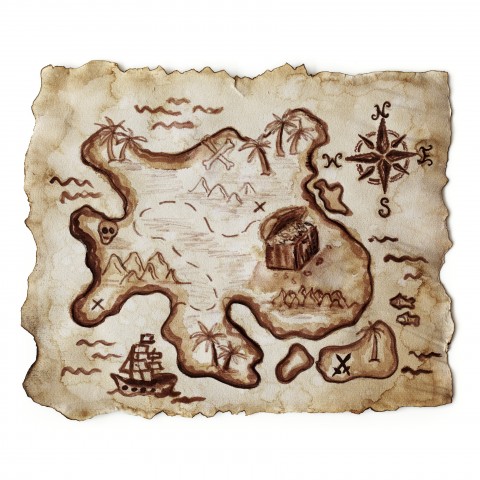
Use locative cases to find the treasure.
5. Lopuksi
In this guide, we’ve touched on many Finnish grammatical delights, from the negative verb to consonant gradation. Are there any particular Finnish grammar rules you would like to see covered in more detail?
To help you learn Finnish grammar organically, many of our audio lessons on FinnishPod101.com include essential grammar information in easy-to-understand chunks. We’ve also built a lesson around some simple tricks to learn grammar. And if you would like to have access to a professional Finnish teacher who can answer even your trickiest grammar-related questions, our Premium PLUS account with one-on-one tutoring is perfect for you.
By the way, if you enjoy learning by watching, check out our videos 4 Ways to Improve Your Finnish Grammar and Fix Your Finnish Grammar in 30 Minutes on the FinnishPod101 YouTube Channel.

The Top 20 Finnish Quotes About Life, Love, and More

Inspirational quotes are popular for a reason—in just a few memorable words, they can uplift, motivate, soothe, or simply make us laugh or nod in recognition. For a language learner, studying famous Finnish quotes is also a great way to gain insight into the Finnish culture and mindset while learning new vocabulary in a fun way.
We’ve put together a collection of inspirational quotes by Finns from different times and different walks of life. Our picks for the top Finnish quotes cover a range of subjects, from life and love to living with courage and raising children. We hope that they will inspire and entertain you, and perhaps even spark a deeper interest in all things Finland.
 Table of Contents
Table of Contents
- Finnish Quotes About Wisdom
- Finnish Quotes About Courage
- Finnish Quotes About Creative Work
- Finnish Quotes About Love
- Finnish Quotes About Children
- Finnish Quotes About Life
- Finnish Quotes About Happiness
- Finnish Quotes About Health
- Finnish Quotes About Aging
- Finnish Quotes About Tough Situations
- Lopuksi
1. Finnish Quotes About Wisdom
What does it mean to be wise, and how is wisdom attained? We’ll start our list with a couple of the best Finnish quotes about wisdom.
#1
| Finnish | Yleensä elämässä on viisasta luottaa siihen, että kaikki menee hyvin. |
| Translation | “In life it’s generally wise to trust that everything will turn out well.” |
| Who said it? | Mauno Koivisto (former President of Finland) |
| This quote was part of the last-ever interview given by Mauno Koivisto in 2013. Koivisto’s words clearly demonstrate that he believed in the power of an optimistic outlook. | |
#2
| Finnish | Muutamat hädän hetket opettavat ihmiselle viisautta enemmän, kuin vuosikymmenien tasaiset olot. |
| Translation | “A few moments of distress teach a person more wisdom than decades of stable circumstances.” |
| Who said it? | Maria Jotuni (writer) |
| Maria Jotuni knew a thing or two about distress—or at least it’s been claimed that her novel Huojuva talo (Tottering House) was based on the challenges she faced in her own life. However it was acquired, her wisdom is visible in her many novels, plays, and short stories. | |
- Did you know that learning a second language will also increase your wisdom? Visit our list of the Top 10 Quotes About Language Learning to find out how.
2. Finnish Quotes About Courage
Courage is something that can be hard to muster up, but it’s always worth the effort. Here are a couple of quotes by Finnish writers on the topic.
#3
| Finnish | Epäröinnin kynnyksellä kysy kuinka paljon rohkeutta uskallat tänään jättää käyttämättä. |
| Translation | “On the threshold of hesitation, ask yourself how much courage you’ll dare not use today.” |
| Who said it? | Tommy Tabermann (poet, politician, journalist) |
| Tommy Tabermann was best known for his love poetry, and he was sometimes referred to as rakkauden apostoli (“the apostle of love”). This quote is a well-loved verse from Tabermann’s poem Kysymys ilman numeroa (“A question without number”). Tabermann certainly practiced what he preached: he threw himself into many new challenges in his life, including politics. | |
#4
| Finnish | Kahdesta vaihtoehdosta koetan valita aina sen, joka pelottaa enemmän. |
| Translation | “Out of two options, I always try to choose the one that scares me more.” |
| Who said it? | Jouko Turkka (theatrical director, teacher, writer, polemicist) |
| Jouko Turkka had a long and impressive career in theatre, and was famous for his intense teaching methods and highly physical approach to theatre. Though he spoke of feeling fear, Turkka gave an impression to many of being completely fearless. He never shied away from conflicts or expressing controversial opinions. | |
- For more wisdom about finding your courage and succeeding, take a look at our list of the Top 11 Quotes About Success.

3. Finnish Quotes About Creative Work
Are you an artist, musician, writer, or other creative person? Then we think you’ll benefit from these Finnish motivational quotes concerning creative work!
#5
| Finnish | Älkää kiinnittäkö huomiota siihen, mitä kriitikot sanovat. Kriitikoille ei ole koskaan pystytetty yhtään patsasta. |
| Translation | “Do not pay attention to what the critics say. Critics have never been honored with a statue.” |
| Who said it? | Jean Sibelius (composer) |
| Many consider Jean Sibelius to be Finland’s greatest composer. His most famous piece is Finlandia, a tone poem about triumphing over adversity and overcoming enemies. Sibelius’s strategy for dealing with his own enemies—critics—was to ignore them. | |
#6
| Finnish | Rauha, lepo—aivojen suursiivous luovaa työtä varten! |
| Translation | “Peace, rest—a spring clean for the brains for creative work!” |
| Who said it? | Aino Kallas (writer) |
| Aino Kallas was a prolific writer of poems, short stories, novels, and plays, so her recipe for increasing creativity must have worked pretty well! | |

4. Finnish Quotes About Love
Are you madly in love with someone? Or maybe you’re a hopeless romantic? Either way, we think you’ll enjoy these Finnish love quotes!
#7
| Finnish | Muutaman sopivan ominaisuuden nähtyään rakkaus leimahtaa. Se on voima, joka kärkkyy mahdollisuuksia toteuttaa itseään. |
| Translation | “Upon seeing a few suitable qualities, love ignites. It is a power that seeks opportunities to express itself.” |
| Who said it? | Markku Envall (writer) |
| Markku Envall has written essays, poems, and a novel, but he’s probably best known for his award-winning collections of aphorisms. This quote will resonate with anyone who has ever fallen head-over-heels in love. | |
#8
| Finnish | Rakkauden tunnustaminen naiselle: vaikein tehtävä mitä luonto on miehelle järjestänyt. |
| Translation | “Declaring your love to a woman: the most difficult task that nature has arranged for a man.” |
| Who said it? | Vilho Lampi (painter) |
| Vilho Lampi may have struggled with expressing love (he had a reputation of being an eccentric loner), but he is celebrated today for his powerful self-portraits and depictions of life in his home municipality of Liminka. | |
- Do you want to read more quotes about romance in Finnish? We have collections of both Love Quotes and Break-Up Quotes on FinnishPod101.com.

5. Finnish Quotes About Children
Family is a cornerstone of any society, and its children are the future. Here are a couple of Finnish quotes about family, focusing on its youngest members.
#9
| Finnish | Lapsi ja elämä hymyilevät sinulle, kun annat niille aikaasi. |
| Translation | “A child and life will smile at you when you give them your time.” |
| Who said it? | Jouko Varonen (writer, teacher) |
| If you’re after wisdom about children, you could do worse than ask Jouko Varonen, a school teacher and an author of numerous young adult books. | |
#10
| Finnish | Jos tahdomme olla lasten kasvattajia, niin antakaamme lastenkin meitä kasvattaa. |
| Translation | “If we want to raise children, let us allow children to raise us as well.” |
| Who said it? | J.H. Erkko (poet, aphorist, playwright) |
| Most Finns will have come across the work of J.H. Erkko primarily in popular songs, such as Jouluaatto (Christmas Eve), which was originally a poem. However, Erkko also excelled in writing aphorisms, including this gem about being raised by children. | |
- Is family a topic close to your heart? Hop over to FinnishPod101.com to read our Top 10 Quotes About Family. And since friends are the family we choose for ourselves, be sure to check out our Top 10 Quotes About Friendship, too.

6. Finnish Quotes About Life
What is life all about, and how should a person live? People have been trying to answer these questions for a long time. Here are a couple of Finnish quotes about life to give you an idea of how a Finn may answer!
#11
| Finnish | Elämä ei ole koekappale tai odotushuone parempia aikoja varten. |
| Translation | “Life is not a test piece or a waiting room for better times.” |
| Who said it? | Soile Yli-Mäyry (painter) |
| Soile Yli-Mäyry is known for her bold and colorful paintings. Here, she reminds us in her own words to stop wasting time and to “seize the moment.” | |
#12
| Finnish | Elämä on ihmisen parasta aikaa. |
| Translation | “Life is man’s best time.” |
| Who said it? | Matti Nykänen (ski jumper) |
| This humorous remark might well be one of the most famous Finnish quotes of all time. The words were uttered by Matti Nykänen, a record-breaking ski jumper. His eventful life also involved a sporadic singing career, five marriages, and a few stints in prison. | |
- Make sure to read through our list of the Top 10 Inspirational Finnish Quotes on FinnishPod101.com.
7. Finnish Quotes About Happiness
We all want to be happy, but how do we get there? These Finnish quotes about happiness can be a good place to start.
#13
| Finnish | Kell’ onni on, se onnen kätkeköön. |
| Translation | “He who has happiness should hide it.” |
| Who said it? | Eino Leino (poet, journalist) |
| This quote is the famous first verse of Eino Leino’s poem Laulu onnesta (A Song of Happiness), penned over a century ago. The poem also advises us to head into the woods to rejoice over our blessings—quietly and alone. The fact that this verse is still widely known today offers a glimpse into the Finnish mindset: Finns value modesty and dislike bragging. This is why you probably won’t hear Finns boasting about their homeland being ranked as the World’s Happiest Country by The World Happiness Report for a third time in a row. | |
#14
| Finnish | Ei se ole rikas, joka omistaa kultaa ja hopeaa, vaan se on rikas, joka tyytyy vähään. |
| Translation | “It is not the man with silver and gold who is rich, but the man who is content with little.” |
| Who said it? | Mika Waltari (writer) |
| In other words: Happiness doesn’t come from riches, but rather from being happy with what you have. This quote appears in Mika Waltari’s most successful novel, Sinuhe egyptiläinen (The Egyptian). | |

8. Finnish Quotes About Health
You should always prioritize your health, because only in good health can you achieve other goals and live life to the fullest. Here are some Finnish words of wisdom on the topic!
#15
| Finnish | Runous tuottaa iloa, ilo runoutta. Ja ilo on välttämätön, terveellinen sekä sielulle että ruumiille. |
| Translation | “Poetry generates joy, joy poetry. And joy is a necessity, healthy for soul and body alike.” |
| Who said it? | Minna Canth (writer, entrepreneur, social activist) |
| Minna Canth was a writer, a journalist (the first Finnish woman to work as one), an entrepreneur, and a social activist—as well as the mother of seven children. Though she wrote mostly plays, novellas, short stories, and articles herself, we’re willing to take her word on the health-boosting properties of poetry. | |
#16
| Finnish | Lepo, toivo, tyytyväisyys ja kohtuullinen ilo pitävät ihmisen terveenä ja vielä toisinaan parantavat sairaankin. |
| Translation | “Rest, hope, contentment, and moderate joy keep a person healthy and at times even heal the sick.” |
| Who said it? | Elias Lönnrot (physician, philologist) |
| Elias Lönnrot is remembered by all Finns as the person who collected the traditional oral poetry that makes up the Finnish national epic, Kalevala. However, Lönnrot was also a physician and had some wise words of his own to share about staying healthy. | |
9. Finnish Quotes About Aging
Even in today’s world of advanced medicine and products that promise to keep us young, aging is an inevitable part of life. Here are a couple of Finnish quotes on aging.
#17
| Finnish | Vanheneminen on hiljaista irtautumista monesta asiasta, jonka ennen koki tärkeänä. Vanheneminen on keskittymistä olennaiseen. |
| Translation | “Aging is quietly letting go of many things that you used to consider important. Aging is focusing on the essential.” |
| Who said it? | Matti Kurjensaari (writer) |
| Matti Kurjensaari was a Finnish author, journalist, and political influencer primarily known for his essays and newspaper columns. His thoughts on growing old were a far cry from his biting political commentary. | |
#18
| Finnish | On vanhuudessa yksi hyvä puolikin sentään. Näkee enemmän, kun on pakko kulkea hitaasti. |
| Translation | “There is one good thing about old age at least. You see more because you’re forced to walk slowly.” |
| Who said it? | Pentti Linkola (philosopher, writer, polemist, environmentalist, fisherman) |
| Pentti Linkola was one of the foremost proponents of deep ecology and famous for his extreme views and scything criticism of modern life. This quote on aging, from an interview in 2016, reveals a more mellow side of this radical thinker. | |

10. Finnish Quotes About Tough Situations
We all encounter those circumstances that seem impossible to navigate. The following Finnish quotes touch on this with words of inspiration and wit.
#19
| Finnish | Voimallinen tahto vie miehen läpi harmaan kiven. |
| Translation | “A strong will takes a man through a gray rock.” |
| Who said it? | Aleksis Kivi (writer) |
| This famous line appears in Aleksis Kivi’s Seitsemän veljestä (The Seven Brothers), the first significant novel published in the Finnish language. The words are uttered by Aapo, one of the titular brothers, while they consider undertaking the difficult task of learning to read. This quote is often linked to the Finnish concept of sisu, a characteristic akin to grit, perseverance, and determination. In fact, the official sisu emoji depicts a determined Finn breaking through a gray rock. | |
#20
| Finnish | Minä juon nyt kahvia. |
| Translation | “I’m drinking coffee now.” |
| Who said it? | Harri Holkeri (former prime minister of Finland) |
| “When in doubt, drink coffee,” could well be the motto of Finns, the most dedicated coffee drinkers in the world. It may also be what the former prime minister of Finland was thinking when he was relentlessly questioned by journalists about his intentions regarding the presidential elections in 1990. | |

11. Lopuksi
In this guide, we’ve explored the world of Finnish wisdom and have covered quotes on a variety of topics, from cultivating creativity to leading a healthy life. Did any of the quotes stand out to you or make you interested in finding out more about the person behind the words? Do you know any serious or funny Finnish quotes that we should have included here? Please share your thoughts in the comments below!
If you’d like more insight into the Finnish language and culture, take a moment to explore all of our free resources, including our extensive collection of vocabulary lists, on FinnishPod101.com. And if you’ve been with us for a while, do come back on a regular basis to check out all of our newest lessons!

Telling Time in Finnish – Everything You Need to Know

What’s your relationship with the clock like? Does it run your day from a morning alarm to a cut-off chime for bed, or are you more of a go-with-the-flow type, letting your mood and emotions decide how much you fall in line with time?
Understanding time in Finnish is an important part of your studies. As humans, our lives are filled with habits and schedules. From waking up and going to work or gym, to missing rush hour traffic on our way home, we’re always aware of time. We have routines around coffee breaks, meetings, soccer games and vacations. In fact, time can seem rather capricious – going slowly, going fast, sometimes against us, other times on our side – like a force that has a life of its own.
In science, time is often referred to as a fourth dimension and many physicists and philosophers think that if we understood the physics of the universe, we would see that time is an illusion. We sense an ‘arrow’ or direction of time because we have memories, but really time is just a construct that humans have created to help make sense of the world.
On the other hand, poets through the ages have written impassioned thoughts about time, depicting it as both a relentless thief and an immensely precious resource, not to be wasted at any cost.
Well, poets and scientists may have their views, but in our everyday lives there’s the question of practicality, isn’t there? I mean, if you have plans and want things to happen your way, there’s a certain amount of conforming to the human rules of time that you can’t avoid.
In ‘The Little Prince’ by Antoine de Saint-Exupéry, the prince has a rose that he falls in love with, and he tenderly protects it with a windscreen and places it under a glass dome on his tiny planet. I love this quote from the book: “It is the time you have wasted for your rose that makes your rose so important.” If we truly love something, we spend time with it and not a second of that time could ever be seen as wasted. I feel that way about horses, my children, travel and learning languages.
With that in mind, I’d like to take you on a journey into ‘time’ from a Finnish perspective. It’s fun, it’s informative and it’s a basic necessity if you’re learning the language – especially if you plan to travel. FinnishPod101 has all the vocab you need to fall in love with telling time in Finnish, and not a minute will be wasted.
 Table of Contents
Table of Contents
1. Talking about Time in Finnish
As a traveler, your primary need for knowing how to read the hour in Finnish will be for transportation schedules: the bus, train, airplane, ferry, taxi… whatever you plan to use to get from A to B, it won’t wait for you! Fortunately, it’s really not complicated. You already have a firm grasp of time in English and you know you’ll need to reset your watch and phone to the local time. Great – that means you’ll have the correct time on your person.
We’re so used to just looking at our phones for the time, that it’s easy to take this convenience for granted and forget some travel basics: in a foreign country, times won’t always be written digitally. If you see the time written in words, it’ll be the same challenge to you as hearing it spoken: you’ll need to be familiar with the language.
You may be surprised at how often ‘time’ comes into conversation. Learning the Finnish terms for time will help you when you have to call a taxi, ask about opening and closing times of events and tourist attractions, restaurants and bars and even late-night food cafes.
My biggest annoyance when traveling is not being able to get coffee and amazingly, even at nice hotels this has happened more times than I care to think about. I’ll be up late planning something, writing my blog or chatting and when I go looking for coffee downstairs, I’m told the kitchen is closed or the ‘coffee lady’ has gone to sleep. Frustrating!
If you’re doing a homestay or at a youth hostel or backpackers, there will probably also be a limited timeframe for when you can grab dinner. Do you know how to ask when it’s time to eat in Finnish? I’ve learned that it’s vital to know how to make my queries clearly understood to accommodation staff and for me to clearly understand their answers. Perfect your ‘time in Finnish’ translations early on – you’ll thank me.
At FinnishPod101, we’ve put together a comprehensive list of Finnish time words and phrases to get you going.

1- Morning – aamu
Morning is the time when we wake up from our dreamworld, hopefully fully rested and restored; we brew the first delicious cup of coffee for the day and watch the sunrise as we prepare for another glorious twelve hours of life. No matter what happened the day before, a new morning is a chance to make everything right.
I like these quiet hours for language practice, as my mind is clear and receptive to learning new things. I start by writing the Finnish time, date and word of the day on my whiteboard, then get back under the covers for an engrossing lesson.
Time in the morning is written as AM or A.M., which stands for ante meridiem – meaning ‘before midday’ in Latin.

2- Evening – ilta
Evening is the part of night when we’re still awake and doing things, winding down from the day. Whether you enjoy a tasty international dinner with friends, go out to see a show, or curl up on the couch with a Finnish snack and your favorite TV series, evening is a good time to forget your worries and do something that relaxes you. If you’re checking in with your Facebook friends, say hi to us, too!
Evening is also an ideal time to catch up on your Finnish studies. The neighbourhood outside is likely to be quieter and time is yours, so grab a glass of wine or a delicious local tea, and see what’s new on your Mac App or Kindle.
3- Daytime – päiväsaika
Daytime is defined as the period from early morning to early evening when the sun is visible outside. In other words: from sunrise to sunset. Where you are in the world, as well as the season, will determine how many daylight hours you get.
Interestingly, in locations north of the Arctic Circle and south of the Antarctic Circle, in summertime the sun does not sink below the horizon within a 24-hour period, bringing the natural phenomenon of the midnight sun. You could only experience this in the north, though, because there aren’t any permanent human settlements south of the Antarctic Circle.
4- Nighttime – yö
Nighttime is all the hours from sunset to sunrise and depending on where in the country you are, people may be partying all night, or asleep from full-dark.
In the same northernmost and southernmost regions where you can experience a midnight sun, winter brings the opposite phenomenon: the polar night. Can you imagine a night that lasts for more than 24 hours?

5- Hour – tunti
An hour is a unit of time made up of 60 minutes and is a variable measure of one-24th of a day – also defined by geeks as 3 600 atomic seconds. Of all the ‘time’ words we use on a daily basis, the hour is the most important, as time of day is typically expressed in terms of hours.
One of the interesting methods of keeping time that people have come up with is the hourglass. Although the origins are unclear, there’s evidence pointing to the hourglass being invented around 1000 – 1100 AD and one of the ways we know this, is from hourglasses being depicted in very old murals. These days, with clocks and watches in every direction we look, they’re really only used symbolically to represent the passage of time. Still – a powerful reminder of our mortality and to seize the day. In his private journal, the Roman emperor, Marcus Aurelius, wrote: “You could leave life right now. Let that determine what you do and say and think.”

6- Minute – minuutti
Use this word when you want to say a more precise time and express minutes in Finnish. A minute is a unit of time equal to one sixtieth of an hour, or 60 seconds. A lot can happen in the next 60 seconds. For example, your blood will circulate three times through your entire vascular system and your heart will pump about 2.273 litres of blood.
7- O’clock – kello
We use “o’clock” when there are no minutes and we’re saying the exact hour, as in “It’s two o’clock.”
The term “o’clock” is a contraction of the term “of the clock”. It comes from 15th-century references to medieval mechanical clocks. At the time, sundials were also common timekeepers. Therefore, to make clear one was referencing a clock’s time, they would say something like, “It is six of the clock” – now shortened to “six o’clock”.
We only use this term when talking about the 12 hour clock, though, not the 24 hour clock (more on that later!) The 12-hour clock can be traced back as far as Mesopotamia and ancient Egypt. Both an Egyptian sundial for daytime use and an Egyptian water clock for nighttime use were found in the tomb of Pharaoh Amenhotep I. Dating to c.1500 BC, these clocks divided their respective times of use into 12 hours each. The Romans also used a 12-hour clock. Daylight was divided into 12 equal hours and the night was divided into four watches.
These days, the internet has made it very easy to know what the time is in any part of the world. Speaking of which, why not add the Finnish time zone clock to your laptop?

8- Half past – puoli
When the time is thirty minutes past the hour, in English we say “half past”. Just like the hour, the half-hour is universally used as an orientation point; some languages speak of 30 minutes before the hour (subtraction), whereas others speak of 30 minutes after the hour (addition).
9- AM – aamulla
As mentioned earlier, AM is the abbreviation of the Latin ante meridiem and means before midday. Using ‘AM’ as a tag on your time simply tells people you’re speaking about a time in the morning. In some countries, morning is abbreviated to “AM” and you’ll see this on shop signs everywhere, announcing the opening hour. A typical shop sign might read something like this:
“Business hours are from 7AM to 6PM.”

10- PM – iltapäivällä
PM is the abbreviation of the Latin post meridiem and means after midday. Along with ‘AM’, you’ll usually find ‘PM’ on store signs and businesses, indicating the closing hours. It’s advisable to learn the difference between the two, since some establishments might only have one or the other on the sign. For example, a night club sign might say:
“Open from 10 PM until late.”
11- What time is it now? – Paljonko kello on nyt?
Here’s a very handy question you should memorize, as you can use it in any situation where you don’t have your watch or phone on you. This could be on the beach, in a club, or if you’re stuck anywhere with a flat phone battery. It happens at home, so it can happen when you’re traveling!

12- One o’clock – kello yksi
One o’clock, or 1 PM, is the average lunch time for many people around the world – at least, we try to get a meal in at some point between midday and 2 PM. In terms of duration, the nations vary: Brazililans reportedly take the longest lunch breaks, averaging 48 minutes, whereas Greece reports an average break of only 19 minutes. Historically, Greeks were known for their very leisurely lunch breaks, so it just goes to show how fast the world is changing. If you’re curious about what to expect in Finland, try asking our online community about lunch time in Finnish.
13- Two o’clock – kello kaksi
In his last days, Napoleon Bonaparte famously spoke of “Two o’clock in the morning courage” – meaning unprepared, spontaneous courage. He was talking about soldiers who are brave enough to tumble out of bed in an instant, straight into action, without time to think or strategize. Do you think you have what it takes? I’m pretty sure all mothers know this feeling!
14- Three o’clock – kello kolme
3 AM can be perceived as the coldest time of day and is not an hour we want to wake up, but meteorologists will tell you that the coldest time is actually half an hour after sunrise. Even though the sun is peeking over the horizon, the solar radiation is still weaker than the earth’s infrared cooling to space.
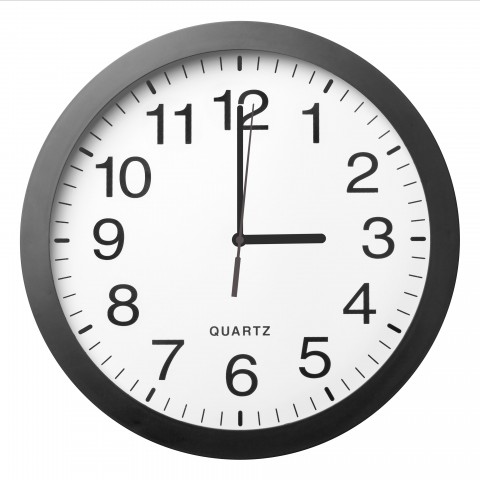
15- Four o’clock – kello neljä
Do you know anyone who purposely gets up at 4 o’clock in the morning? As crazy as it sounds, there is something to be said for rising at 4 AM while the rest of the world sleeps. If you live on a farm, it might even be normal for you. I know that whenever I’m staying in the countryside, rising early is a lot easier, because there’s a satisfying reason to do so: watching a sunrise from a rooftop, with uninterrupted views, can’t be beat! It’s also likely that you’ll be woken by a cock crowing, or other animals waking to graze in the fresh pre-dawn air.
In the world of business, you’ll find a small group of ambitious individuals – many entrepreneurs – who swear by the 4 o’clock in the morning rise. I’m not sure I like that idea, but I’d wake up at 4 AM if it was summer and I had my car packed for a vacation!
16- Five o’clock – kello viisi
What better way to signal the transition between work and play than the clock hands striking 5 o’clock? It’s the hour most working people look forward to each day – at least, those who get to stop working at 5 PM. Meanwhile, millions of retired folks are taking out the wine glasses, as 5 PM is widely accepted as an appropriate time to pour the first glass. I don’t know how traditional your families are, but for as long as I’ve been alive, my grandparents have counted down the milliseconds to five o’clock, and the hour is announced with glee.

17- Six o’clock – kello kuusi
This is the time many working people and school kids wake up in the morning. In many parts of the world, 6 o’clock is also a good time to watch the sunrise, go for a run or hit the hiking trails.
18- Seven o’clock – kello seitsemän
Health gurus will tell you that 7 o’clock in the morning is the best time to eat your first meal of the day, and 7 o’clock in the evening is the time you should eat your last meal. I’ve tried that and I agree, but it’s not always easy!
19- Eight o’clock – kello kahdeksan
8 o’clock in the morning is the time that most businesses open around the world, and the time most kids are in their first lesson at school – still full of energy and willing to participate. Interestingly, it’s also the time most babies are born in the world! In the evening, 8 o’clock is many young children’s bedtime and the time for parents to watch the evening news.

20- Nine o’clock – kello yhdeksän
It’s good to occasionally sleep late on a weekend and for me, this means waking up at 9 AM. If you’re traveling in Finland and staying at a hotel, planning to sleep late means politely requesting to not be woken up by room service.
21- Ten o’clock – kello kymmenen
10 o’clock in the morning is a popular time to conduct business meetings, and for first break time at schools. We’re usually wide awake and well into our day by then. But what about the same hour at night? Modern people are often still awake and watching TV at 10 PM, but this isn’t exactly good for us. Experts say that the deepest and most regenerative sleep occurs between 10 PM and 2 AM, so we should already be sound asleep by ten o’clock.
In advertising, have you ever noticed that the hands of the clock usually point to 10:10? Have a look next time you see a watch on a billboard or magazine. The reason? Aesthetics. Somehow, the human brain finds the symmetry pleasing. When the clock hands are at ten and two, they create a ‘smiley’ face and don’t cover any key details, like a logo, on the clock face.
22- Eleven o’clock – kello yksitoista
When I see this time written in words, it makes me think of the hilarious Academy Award-winning very short film, “The Eleven O’Clock”, in which the delusional patient of a psychiatrist believes that he is actually the doctor.
Then there’s the tradition of ‘elevenses’ – tea time at eleven o’clock in the morning. Strongly ingrained in British culture, elevenses is typically a serving of hot tea or coffee with scones or pastries on the side. It’s a great way to stave off hunger pangs before lunch time arrives. In fact, if you were a hobbit, ‘Elevenses’ would be your third meal of the day!
23- Twelve o’clock – kello kaksitoista
Twelve o’clock in the daytime is considered midday, when the sun is at its zenith and the temperature reaches its highest for that day; it’s written as 12 noon or 12 PM. In most parts of the world, though, this doesn’t happen at precisely 12 PM. ‘Solar noon’ is the time when the sun is actually at its highest point in the sky. The local or clock time of solar noon depends on the longitude and date. If it’s summertime, it’s advisable to stay in the shade during this hour – or at least wear good quality sunblock.
Midnight is the other ‘twelve o’clock’, of course. Midnight is written as 12 AM and is technically the first minute of the morning. On the 24-hour clock, midnight is written as 00:00.

2. How to Tell the Time in Finnish

Using a clock to read the time in Finland is going to be the same as in your own country, since you’re dealing with numbers and not words. You’ll know the time in your head and be able to say it in English, but will you be able to say it out loud in Finnish?
The first step to saying the time in Finnish is knowing your numbers. How are you doing with that? If you can count to twelve in Finnish, you’re halfway there! We’ve already covered the phrases you’ll need to say the exact hour, as in “five o’clock”, as well as how to say “half past”. What remains is the more specific phrases to describe what the minute hand is doing.
In everyday speech, it’s common to say the minutes past or before the hour. Often we round the minutes off to the nearest five.
Then, there’s the 24-hour clock. Also known as ‘military time’, the 24-hour clock is used in most countries and, as such, is useful to understand. You’ll find that even in places where the 12-hour clock is standard, certain people will speak in military time or use a combination of the two. No doubt you’ve also noticed that in written time, the 24-hour clock is commonly used. One of the most prominent places you’ll have seen this is on airport flight schedules.
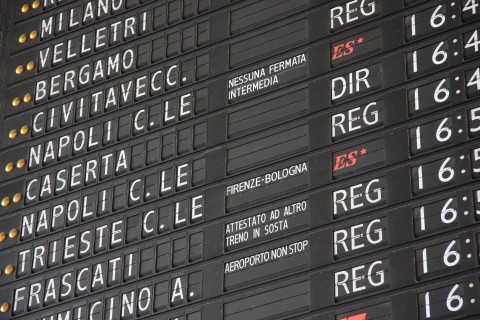
Knowing how to tell military time in Finnish is really not complicated if you know your numbers up to twenty-four. One advantage of using the 24-hour clock in Finnish, is there’s no chance of confusing AM and PM.
Once you know how to say the time, it will be pretty easy to also write the time in Finnish. You’re already learning what the different hours and minutes look and sound like, so give yourself some writing practice of the same.
3. Conclusion
Now that you understand the vocabulary for telling time in Finnish, the best thing you can do to really lock it down is to just practice saying Finnish time daily. Start by replacing English with Finnish whenever you need to say the time; in fact, do this whenever you look at your watch. Say the time to yourself in Finnish and it will become a habit. When learning a new language, the phrases you use habitually are the ones your brain will acquire. It feels amazing when that turning point comes!
To help yourself gain confidence, why don’t you make use of our various apps, downloadable for iPhone and iPad, as well as Android? Choose what works best for you. In addition, we have so many free resources available to supplement your learning, that you simply can’t go wrong. Some of these are:
- Free lessons on iTunes
- A free mini lesson every day with the Innovative Language Calendar.
- Free audio books for lessons on the go.
If you prefer watching your lessons on video, check out our YouTube channel – there are hundreds of videos to browse. For those of you with Roku, we also have a TV channel you can watch.
Well, it’s time for me to say goodbye and for you to practice saying the time in Finnish. Look at the nearest clock and try to say the exact time, down to the seconds. See you again soon at FinnishPod101!

The Finnish Calendar: Talking About Dates in Finnish
Did you know there are many different types of calendars?
As you probably know – a calendar is a system of organizing days in weeks and months for specific purposes, according to Wikipedia.
Worldwide, most countries use the Gregorian calendar. Some just work on the same framework, meaning that time is divided into units based on the earth’s movement around the sun – the “solar calendar”. Other calendars keep time by observing the moon’s movements, a combination of the moon and the sun’s movements, and seasons.
Through FinnishPod101, you can learn all about this and so much more! Our themed, culturally relevant lessons are skillfully designed so you can do your planning perfectly for a holiday or a date.
Having a good plan for a visit or a trip is like studying well for an exam. You’re just so much better prepared! For that, you could well need specific phrases to plan around appointments and such, especially on business trips. Make sure to use the charts we provide here with the days of the week in Finnish, as well as the months in Finnish to navigate your way as you plan. Great resources!
Also – always remember to have fun!
Table of Contents
- Why Will It Help To Know How To Talk About Dates in Finnish?
- Talking About your Plans
- Can FinnishPod101 Help You In Other Ways Too?

1. Why Will It Help To Know How To Talk About Dates in Finnish?
Well, that’s not a difficult question to answer. No matter why you’re travelling, it would be best to at least know the names of days and months in Finnish. You don’t want to miss your flight or an appointment because you confused “perjantai” (Friday) with “lauantai” (Saturday)! Or maybe you planned a holiday for “heinäkuu” (July), but you booked a flight for “kesäkuu” (June) by accident!
Avoid this confusion by learning the Finnish calendar before you leave.
Now, as promised, the 15 phrases to help you make and discuss plans.
2. Talking About your Plans
Perhaps you’re working in Finland, or maybe you’re enjoying a prolonged holiday. Fabulous! Memorize these phrases so you can be sure to successfully negotiate meetings, appointments, dates, events, the list goes on!
1. Mitä sinä teet tänä viikonloppuna?
“What are you doing this weekend?”
This question is usually a preamble to inviting someone somewhere. Given that it’s over the weekend, it probably means a casual get-together or another social event. (But not necessarily! A manager or boss could also ask this for entirely different reasons.)
It’s a handy phrase to know when you’ve made Finnish or expat friends in the country. Or, be the one doing the inviting. Then train your ear to learn the following phrases so you can understand the response.
2. Matkustan tänä viikonloppuna.
“I am traveling this weekend.”
This could be a reply if you’re not available because you’re doing other fun stuff.
No matter why you are visiting Finland, do take the time to explore the country! It’s beautiful and it has so many wonderful, interesting spots ready to be visited.
3. Aion jäädä kotiin.
“I am planning to stay at home.”
Maybe you feel unwell, but don’t want to give too much information? Or maybe you have work to do? Perhaps you just need some quiet gardening time…it doesn’t matter. This response is polite and honest without oversharing.
It could also be a slightly open-ended response, depending on how you deliver it. Because hey, being home could still mean your plans are flexible, right?
That said – depending on your relationship with the inviter, nuances like these will probably not be so apparent in a foreign culture. So, best to use this excuse for declining an invitation only if you are truly set on staying in.
4. Tällä viikolla olen kiireinen.
“This week I am busy.”
Another polite phrase that gives a reason for declining an invitation but without oversharing details.
Don’t decline too many invitations, though! You don’t want people to think that you’re too busy to hang out with them. They will stop inviting you out, and you know how the saying goes – all work and no play makes Jack a dull boy…! Being social is good for the soul.
5. Olen vapaa huomenna.
“I am free tomorrow.”
Yay! Perhaps you were approached by that person and they asked about your availability for a date. This would be a fine reply. Not too eager, but still indicating that you’re interested.
Or maybe you’re just replying to a colleague or manager’s request for a meeting. Polite, honest and clear.
Alternatively, you’re just busy right now, and plans are not going the way they were…well, planned. Compromise is a lovely thing! And this phrase sounds just like that.
Use it to indicate that you want to accommodate an invitation or the inviter’s plans, despite your current unavailability. Only if you are really free, of course.
6. Voimmeko suunnitella tämän uudelleen?
“Can we reschedule this?”
So, life happened and you are unable to meet obligations or attend a planned meeting. This is a suitable question to ask if you wish to indicate your willingness to still engage with whatever is on the table.
Obviously you should (ideally) not ask to reschedule a party or big meeting! (Unless you’re the boss or it’s your own party, of course.) But if there’s reasonable wiggle room regarding arrangements, then this one’s your question.
7. Minulla on tarpeeksi aikaa kuukauden lopussa.
“I will have enough time at the end of the month.”
A go-to phrase when events or activities are likely to take up a lot of your time, such as going away for a weekend, spending the day at a local market, or writing your manager’s quarterly report (with 20 flow-charts in Powerpoint) – anything that won’t only take an hour or two.
8. Milloin on sinulle sopivin aika?
“When is the best time that suits you?”
Remember phrase #5? That was a possible reply to this question. Asked by your crush, very possibly! Or, it could be asked by any other person for any other reason, doesn’t matter.
If this is addressed to you, it usually means that the person respects your time and schedule, which is a good thing. It probably also means that their own schedule is flexible, another good thing.
This is also a polite question to ask when a manager or senior colleague wants to meet with you. Let them decide on the time, and be as accommodating as possible. This attitude shows respect for seniority – good for career building. (Within reason, of course. You don’t need to postpone your wedding or your paid-up holiday to Australia because your manager wants to see you.)
9. Onko tämä päivämäärä OK sinulle?
“Is this date OK with you?”
But – if the other party insists that you choose a time for a meeting, appointment, or date etc., then do so! Respond with this nice, somewhat casual question that leaves space for negotiation, but only needs a simple reply.
Suitable for friends, and casual acquaintances and colleagues.
10. Oletko käytettävissä kyseisenä päivänä?
“Are you available on that day?”
This is the a-bit-more-formal version of the previous question. Again, it has room for negotiation, but only needs a simple response – nice and neat!
Maybe this is the go-to question when you’re addressing your seniors at work, or a person much older than you.
11. Voimmeko tehdä sen mahdollisimman pian?
“Can we do it as soon as possible?”
This question has an urgency to it that should preferably be responded to with the same. A simple reply will be good – yes or no. Less negotiable, this is still polite because it’s a question that gives you a choice.
But stand ready with one of the phrases in this article to help tie down a time and date!
12. Olen käytettävissä joka ilta.
“I’m available every evening”
If you’re going to reply with this phrase, context is everything.
– If it’s your manager asking you to put in a bit of overtime, and you are available to – great reply! When deadlines are tight and everybody is stressing, your willingness to go the extra mile can only improve your relationship with your boss.
(Still, no need to be a doormat! If you get asked to work overtime too often, or if everyone else is goofing around while you have to graft, then re-evaluate the situation. And if you feel you’re being exploited a bit, don’t stress! Equip yourself with the diplomatic, yet assertive responses right in this article.)
– If it’s an old friend or longtime significant other asking to hang out – good reply. You know one another and appearances don’t matter any longer.
– If it’s a new crush who just asked when you’d be available for a date – stop. Not such a great reply. Tone down a bit! “Interested but not overly eager” is what you’re going for here.
Refer back to response #5, or use a counter-question, such as #1. Whatever suits you.
But if they – or anyone else – invite you to scale the Himalayas with them, then the next phrase will probably be the only sane response!
13. Minun täytyy suunnitella tämä hyvin etukäteen.
“I need to plan this well in advance.”
So, as said under #9, perhaps you’re invited to join someone conquer the Himalayas.
Or your company manager wants you to plan the Party that Tops All Year-End Parties Forever.
Simply – if you get asked to do something that you know will need a lot of thorough planning, this is a good phrase to respond with.
It’s an assertive phrase that demonstrates two things regarding your attitude:
a) That you know your own abilities, and respect your own schedule.
b) That your respect other people’s time and schedule too.
Then just be sure to actually do that planning well in advance!
14. Meidän on löydettävä toinen päivämäärä.
“We need to find another date.”
So, you’re in negotiations regarding a date.
This is an assertive statement that should probably not be used with a “My way or the highway” attitude.
That stuff only works in the movies – think sharp-tongued Samuel L. Jackson. Or fierce Kristen Stewart. Yea, they can be scary, so tone down that tone.
Also, be mindful that fickle people who change plans all the time don’t keep friends! Taking others’ needs into consideration, while simultaneously having your way is a delicate art that takes proper cultivation. Use this phrase sparingly – we have better ones here to negotiate with.
Of course, if your planned trip to the dentist falls on the same day as the only Billie Eilish concert close by…well, priorities are priorities. Feel free to call the dentist with this phrase. Or even better, use the next one.
15. En voi tehdä sitä sinä päivänä.
“I cannot do it on that day.”
This is the low-key-but-still-firm cousin of the previous phrase. You’re stating a personal fact, and depending on your tone, this can be as non-negotiable as you prefer.
Again, only use this when you really mean it, if you’re visiting Finland or any other foreign country.
So, that’s it, folks! Which phrase did you find the most helpful? Let us know in the comments!
3. Can FinnishPod101 Help You In Other Ways Too?
Well yes, of course!
We think you will find these phrases easy to use when talking about dates and months in Finnish. But knowing how to employ them properly could help you avoid sticky situations!
FinnishPod101 is uniquely geared to help you with this and so much more.
This InnovativeLanguage.com initiative is one of many online language-learning courses. With us, you’ll find it easy and fun to learn a new language, and here are a few reasons why:
- Immediately upon enrollment, you’ll receive hundreds of well-designed lessons to get you going.
- Watch superb recordings of native Finnish speakers in cool slide-shows – the easy way to practice till you sound just like a native speaker yourself!
- Also immediately upon enrollment, you’ll get access to a huge library of free resources! These include extensive, theme-based Vocabulary Lists and a Word of the Day List (For free, hot bargains!) These alone are sure to give your vocab-learning boxing gloves.
- You’ll also immediately be able to use an excellent and free Finnish online dictionary. Necessary for quick, handy translations, no matter where you find yourself.
- For the serious learner, there are numerous enrollment upgrades available, one of which offers you a personal, online Finnish host. Allow us to hold your hand and support you in your learning!
If you’re serious about mastering Finnish easily yet correctly, FinnishPod101 is definitely one of, if not the best, online language learning platforms available. Talking about your plans or dates in Finnish need not ever spoil your stay.
So, hurry up—enroll today!
FinnishPod101’s Essential Finnish Travel Phrase Guide
Traveling to foreign countries is nearly always an exciting, enriching, and beneficial experience. Yet, some things can be real downers, such as boredom on a lengthy flight to Finland. Really, binge-watching onboard movies can only be interesting for so long! And jet lag – another huge downer. Did you know that jet lag is more severe when you travel from the West to the East?
Well, we won’t know how to beat that, but there are fortunately plenty of remedies around to investigate.
To beat flight boredom, though, we may have the answer for you at FinnishPod101! Why don’t you take the time to study Finnish travel phrases? We make this super easy and fun, with great downloadables, like our PDF Cheat Sheets. Quickly memorize these, and impress your Finnish friends or travel guide with your flawless Finnish!
Table of Contents
- Importance Of Learning Travel Phrases
- 13 Must-Have Travel Phrases and Words
- Good-To-Have Travel Phrases
- Ways To Improve Communication in a Foreign Country
- FinnishPod101 Can Help You Master Travel Phrases Easily and Effortlessly!

1. Importance Of Learning Travel Phrases
Impressing Finnish people or your travel partners will be the least of the benefits you reap from learning these helpful phrases. These are greater ones:
1) Eliminate Travel Frustration: First of all, you’ll be able to cut out a good chunk of travel frustration and inconvenience due to language barriers.
Know how to pronounce and use at least the basic Finnish phrases, and then just look foreign. This should go a long way to help you get by and win you friends, because locals would be more inclined to help someone who took the trouble to learn a smidgen of their language.
2) Emergency Readiness: In case of an emergency, you will be able to get help a lot quicker if you know how to ask for what in Finnish. Imagine miming to a doctor or nurse that you have a sore ear but that you’re allergic to penicillin. Not so easy, right?
Rather, you should know basic emergency travel phrases, especially if you suffer from a serious condition. Also, information about life-threatening allergies you have should always be on your person in the language of the country you’re visiting.
3) Sight-Seeing Readiness: Hopefully, you also travel to learn more about a country’s culture. Visiting the main tourist sites in Finland will be more interesting if you know how to ask pertinent questions in Finnish.
In this blog, we’ll also be giving you important travel phrases to consider – from the 13 essential must-have phrases to ones that are just generally useful and good to know.
Let’s get cracking!
2. 13 Must-Have Travel Phrases and Words
Seasoned explorers of multiple countries will tell you that certain words and phrases are absolute must-knows in anyone’s travel vocabulary. Learning from them, we collated some of the most essential ones here for you.
If you know these travel phrases and words by heart in Finnish, you will be much better equipped for your visit than most of your movie-binging travel mates.
1) Kiitos (Thank you)
As a tourist, you will be relying on the kindness of strangers to get by. Repay them with a small acknowledgment of their friendly generosity – know how to say “thank you” in Finnish.
2) Puhutteko englantia? (Do you speak English?)
While it may be a bit of a cop-out, sometimes you just can’t figure out how to communicate. Maybe you’re blanking on one specific word you need, maybe they’re speaking with a heavy accent, or maybe it’s just really late and you really want to get to the hotel. In that case, try asking if they speak English, and hopefully you can make things a little bit simpler for yourself.
Don’t abuse this phrase, though! If you just try to get by without learning any of the local language, not only will you not learn anything – you’ll be out of luck if they can’t speak English!
3) Meneekö lentokentältä bussia kaupunkiin? (Is there a bus from the airport to the city?)
Public transit is usually cheaper, if slower, than taking a taxi or rideshare. Use this phrase to see if you can get where you’re going when you’re strapped for cash, or just when you’d like to take the scenic route into town!
4) Onko tämä oikea bussi lentokentälle? (Is this the right bus for the airport?)
Likewise, if you’re the kind of person who can get themselves moving early (or maybe you just have a late flight), maybe you want to take the bus to the airport rather than taking a cab. If that’s the case, you’ll want to be sure you’re actually heading the right way! You wouldn’t want to end up at a lookout point half an hour away, watching your flight take off in the distance, would you?
5) Anteeksi, mitä matka maksaa? (Excuse me, what’s the fare?)
If you are paying for a cab, you’ll want to know how much. Most legal taxis will have meters, but when dealing with a currency you’re not familiar with, it can be worth asking just to double check that you’re paying the right amount – especially if the currency has cents.
6) Minulla on varaus (I have a reservation)
This one you can expect to use at least a few times throughout your trip, unless you’re the kind of person who travels by the seat of their pants and just goes to whatever hotel, motel, or hostel has rooms available.
7) Onko teillä vapaita huoneita tänä iltana? (Do you have any vacancies tonight?)
If that’s the case, you’ll definitely be using this phrase instead. Quite possibly a lot, depending on how lucky you are!
8 ) Missä on rautatie-asema? (Where is the train station?)
If you’re in a country with an expansive commuter rail system (or maybe just a fan of other types of locomotives), you may want to know where the closest station is. Just don’t go looking for pennies on the rails!
9) Olen allerginen maapähkinöille (I am allergic to peanuts)
Replace “peanuts” with whatever the word for your allergen may be. If your allergy is serious, you probably already know the importance of stating this very clearly in Finnish.
If the condition is life-threatening, be sure to have a letter or prescription from a medical professional in Finnish on your person at all times. Consider getting a medical alert bracelet specially made in Finnish if your stay will be longer than a month or so.
10) Onko teillä mitään kasvisruokia? (Do you have any vegetarian dishes?)
If you dislike eating certain things, or you have certain dietary restrictions, it would be best if you knew how to convey this clearly in Finnish.
Remember, though, that saying “I’m vegan” or “I’m diabetic” may not be enough to get you what you want. The rules for veganism and vegetarianism are not standard everywhere in the world. Also, your patron might not understand what “diabetic” means. If you have a medical condition, it would be best to research some in-depth vocabulary beforehand.
11) Voisinko saada kartan? (Could I get a map?)
Planning on exploring your destination? Hopelessly lost? Maybe just an amateur cartographer? No matter the reason, this phrase is sure to come in handy. That said, you’re more likely to get use out of it at some sort of tourist or travel center than you are asking a random passerby on the street.
12) Paljonko tämä on? (How much is this?)
Even if you’re not a big shopper, you’re probably going to need this phrase at some point. Knowing how to count in Finnish will, of course, help a lot with purchases too.
13) Käykö teillä luottokortti? (Do you take credit card?)
This is another travel phrase that will smooth your monetary transactions considerably.
3. Good-To-Have Travel Phrases
Unlike the previous phrases, these are not really essential so much as they are useful. Yet, knowing these will still smooth over some bumps on your journey, more than just knowing the crucial phrases would.
1) Onko Wi-Fi-ilmainen? (Is the Wi-Fi free?)
If you’re abroad, your normal cellular plans probably won’t have any service, and you’ll be totally reliant on publically available Wi-Fi while you’re out and about. Just ask a server, clerk, or attendant, and they’ll be happy to let you know. Just make sure you’re paying attention when they tell you the password!
2) Voisitko ottaa minusta kuvan? (Could you take a picture of me please?)
What would a trip be with no photos to commemorate the event? Just be sure to ask this of someone who actually looks like they’d be willing to, unless you’re willing to risk being given the cold shoulder or worse. If you’re at a tourist attraction, you’ll find that most people are more than happy to take one for you, so long as you take one of them as well!
3) Onko teillä mitään suosituksia? (Do you have any recommendations?)
Eating alone in a restaurant? Or going out with new Finnish friends or business colleagues? Let them help you decide what to have.
4) Haluaisin savuttoman istuinpaikan, kiitos (I’d like to have a non-smoking seat, please)
Though smoking has gone out of fashion in some places, it’s still popular in others. In the event you’re at a restaurant where smoking is allowed on premises, you can always ask this question to the staff and be seated elsewhere.
5) Vettä, kiitos (Water, please)
If you’ve emptied your glass, or are cutting yourself off after a few drinks, you can always ask for some water. It can be especially useful if the restaurant is busy to the point you need to call out to someone to get service.
6) Voisinko saada laskun? (Could I have the check?)
To finish off the restaurant related phrases, if you’re eating with friends or really want to impress your colleagues, taking the bill can be a nice treat for them. Of course, this phrase could come in handy as well if you’re eating alone and you’re just impatient to leave.
7) Mitä suosittelette matkamuistoksi? (What do you recommend for a souvenir?)
Now that your trip is over, what better way to cap it all off than a memento, or maybe a gift for friends and family at home? It’ll be nicer to have something recommended by the locals than a cheap bauble from the airport store, so go ahead and ask someone you’ve met what they think.
4. Ways To Improve Communication in a Foreign Country
When traveling, it’s possible to keep communication smooth when you don’t share a language.
Do so by keeping these five tips in mind. They are aimed to help you communicate with those who cannot speak English very well, and also to keep your traveling experience pleasant!
1. Keep your English simple and easy to understand.
If the person you are talking to speaks very little English, use basic verbs, adjectives, and nouns, and keep sentences short.
However, don’t patronize them by talking in pidgin or like you would address a child. Keep your speech simple but natural, and use the correct grammar.
For instance, don’t say: “You come when?”. If you say: “When will you come?”, you will very likely be understood, and may even help someone who wants to improve their English.
2. Ask someone to write information down.
Apply Rule 1 first at your hotel, where the staff is very likely to be able to speak some English. Get them to write down, in their native language, things like: “I would like to go to the airport, please,” “Please take me to the beach,” or “Where is the closest bathroom?”
These written questions are something you can then give to taxi drivers or any other people who are willing and able to help you. This simple step could make your life a lot easier when you travel to a foreign country!
3. Avoid asking leading questions!
If you want the correct information from a non-native English speaker, that is.
When you need directions, for instance, don’t ask: “To get to the bus stop, do I need to turn left here?” If the person didn’t really understand you, you will probably just get a smile and a “Yes,” which could possibly make you miss your bus.
Rather, you should ask: “Where is the bus stop?” If they understand you, you will get the correct directions.
4. Pick the right person to ask for help.
Time to look at people and think a bit about their appearance! A younger person who looks like they might be a student is more likely to have English skills than the friendly but ancient lady smiling at you from a fruit stall.
If you don’t see anyone like that, head into town to the nearest bank, hospital, pharmacy, or hotel. The staff at those places usually speak a bit of English.
5. Know when to quit.
If you stuck to the above rules, but the person you are talking to only stares at you blankly, say thank you and leave. Hanging around hoping someone will suddenly understand and respond is just wasting your time, and may irritate them as well. Go find someone else.
5. FinnishPod101 Can Help You Master Travel Phrases Easily and Effortlessly!
So, reader, have you found this article helpful?
Do you feel comfortable enough to use some essential travel phrases in Finnish? We’d also love to hear if you think we left out important travel phrases. Leave your suggestions and opinions in the comments!
FinnishPod101 takes the lead with many free learning tools to help you master Finnish reading and speaking easily, and in fun ways.
These tools include:
– An extensive vocabulary list, regularly updated
– A new Finnish word to learn every day
– Quick access to the Finnish Key Phrase List
– A free Finnish online dictionary
– The excellent 100 Core Finnish Word List
– An almost limitless Lesson Library for learners of all levels
You will also have access to topic-specific recordings like our Before You Travel: Survival Phrases lesson.
Learn even more efficiently with the help of a personal tutor, after taking an assessment test to personalize and tailor your training.
Getting a tutor is also a good option if you meet challenges in your learning, or need to fast-track correct pronunciation and diction. Your very own friendly, Finnish-speaking teacher will be only a text away on a special app, anywhere, anytime – an excellent option for business persons!
Using a guided learning system that was developed by experts in language and online education, you’ll receive personal feedback and constant support to improve in no time. You’ll also be tasked with weekly assignments in reading, writing, and speaking to hone your Finnish speaking skills.
Imagine how impressed your Finnish friends or colleagues will be when you display your excellent conversational skills! With FinnishPod101, getting there will be easy and fun.

How to Say Happy New Year in Finnish & New Year Wishes
Learn all the Finnish New Year wishes online, in your own time, on any device! Join FinnishPod101 for a special Finnish New Year celebration!
Can you relate to the year passing something like this: “January, February, March – December!”? Many people do! Quantum physics teaches us that time is relative, and few experiences illustrate this principle as perfectly as when we reach the end of a year. To most of us, it feels like the old one has passed in the blink of an eye, while the new year lies ahead like a very long journey! However, New Year is also a time to celebrate beginnings, and to say goodbye to what has passed. This is true in every culture, no matter when New Year is celebrated.
So, how do you say Happy New Year in Finnish? Let a native teach you! At FinnishPod101, you will learn how to correctly greet your friends over New Year, and wish them well with these Finnish New Year wishes!

Table of Contents
- How to Celebrate New Year in Finland
- Must-Know Finnish Words & Phrases for the New Year!
- Top 10 New Year’s Resolutions in Finnish
- Inspirational New Year Quotes
- Inspirational Language Learning Quotes
- How To Say Happy New Year in 31 Languages
- How FinnishPod101 Can Help You Learn Finnish
But let’s start with some vocabulary for Finnish New Year celebrations, very handy for conversations.
1. How to Celebrate New Year in Finland
Like everywhere in the world, in Finland the New Year is one of the most important celebrations of the year. In Finland, the New Year celebration is focused mainly on New Year’s Eve or uudenvuodenaatto, that is, on the last day of December. New Year’s Day, uudenvuodenpäivä, on January 1, is a public holiday, when many people wind down at home with their families.
Now, before we get into more detail, do you know the answer to this question-
Do you know what dishes are typically associated with Finnish New Year?
If you don’t already know, you’ll find out a bit later. Keep reading.
Shops and offices typically close earlier than usual on New Year’s Eve, after which it’s time to concentrate on the celebrations for the coming year. Given Finns’ great love for saunas, relaxing in a sauna is often a vital part of a New Year’s Eve program in Finland. Many go to restaurants and clubs to celebrate the New Year, while more formal New Year’s celebrations include the opera and the theater.
Some highlights of New Year’s celebrations include pewter casting, or tinan valaminen, and fireworks, or ilotulitteet. The horseshoe-shaped pewter pieces are melted in a metal ladle, after which the melted pewter is dropped into snow or water where it solidifies into a statuette. People observe the interesting shapes the statuette takes on, and use them to try to make predictions for the coming year. For example, a piece in the shape of a ship may foretell travel, and a lace-like surface may predict money. The fireworks portion of the festivities are greatly loved by all, especially children. In Finland, fireworks are allowed to be set off only between 6 pm and 2 am on the night of New Year’s Eve.
Shops are closed during New Year’s Day, allowing everyone to spend the day peacefully with their families. The president of Finland also gives a traditional New Year’s speech, which is broadcast live on TV. Many Finns choose to watch the Vienna Philharmonic’s New Year’s concert on television. Making New Year’s resolutions or uudenvuodenlupaus, on New Year’s Day is one of the most popular traditions, encouraging people to look forward to the upcoming year. Resolutions usually revolve around changing bad habits, starting new hobbies, or setting goals.
In the past, Finns celebrated the New Year as “Kekri,” a feast of harvest, during October or November. At the time, people would try to predict the future by throwing a bath whisk on the roof of a sauna, or by throwing hay on the roof purlins. The direction where the bath whisk would point would predict the future; if the stem was pointing towards the town church and graveyard, death was expected. But if the leaves were pointing towards the church, it meant marriage for the unmarried, and happiness for the married. On some occasions the stem was thought to point in the direction of the house of one’s future spouse. A similar tradition held that when a bundle of hay was thrown towards the roof purlins, one would ask a question at the same time—if most of the hay stayed on the purlins, the answer would be “yes”, if most of it fell back on the floor, the answer would be “no”.
Now it’s time to answer our quiz question-
Do you know what dishes are typically associated with Finnish New Year?
The New Year is not a time to get stressed about cooking, so people try to focus on easy and delicious food instead. Surprisingly, potato salad and wieners are a primary part of the New Year’s menu for many Finns! The drink of choice is, of course, sparkling wine or champagne!
Happy New Year!
Hyvää uutta vuotta!
2. Must-Know Finnish Words & Phrases for the New Year!
1- Year
vuosi
This is pretty self-explanatory. Most countries follow a Gregorian calendar, which has approximately 365 days in a year, while in some cultures, other year designations are also honored. Therefore, New Year’s day in Finland could fall on a different day than in your country. When do you celebrate New Year?
2- Midnight
keskiyö
The point in time when a day ends and a new one starts. Many New Year celebrants prefer to stay awake till midnight, and greet the new annum as it breaks with fanfare and fireworks!
3- New Year’s Day
uudenvuodenpäivä
In most countries, the new year is celebrated for one whole day. On the Gregorian calendar, this falls on January 1st. On this day, different cultures engage in festive activities, like parties, parades, big meals with families and many more.
4- Party
juhla
A party is most people’s favorite way to end the old year, and charge festively into the new one! We celebrate all we accomplished in the old year, and joyfully anticipate what lies ahead.
5- Dancing
tanssi
Usually, when the clock strikes midnight and the New Year officially begins, people break out in dance! It is a jolly way to express a celebratory mood with good expectations for the year ahead. Also, perhaps, that the old year with its problems has finally passed! Dance parties are also a popular way to spend New Year’s Eve in many places.
6- Champagne
samppanja
Originating in France, champagne is a bubbly, alcoholic drink that is often used to toast something or someone during celebrations.
7- Fireworks
ilotulitus
These are explosives that cause spectacular effects when ignited. They are popular for announcing the start of the new year with loud noises and colorful displays! In some countries, fireworks are set off to scare away evil spirits. In others, the use of fireworks is forbidden in urban areas due to their harmful effect on pets. Most animals’ hearing is much more sensitive than humans’, so this noisy display can be very frightful and traumatising to them.
8- Countdown
lähtölaskenta
This countdown refers to New Year celebrants counting the seconds, usually backward, till midnight, when New Year starts – a great group activity that doesn’t scare animals, and involves a lot of joyful shouting when the clock strikes midnight!
9- New Year’s Holiday
uudenvuodenloma
In many countries, New Year’s Day is a public holiday – to recuperate from the party the previous night, perhaps! Families also like to meet on this day to enjoy a meal and spend time together.
10- Confetti
konfetti
In most Western countries, confetti is traditionally associated with weddings, but often it is used as a party decoration. Some prefer to throw it in the air at the strike of midnight on New Year’s Eve.
11- New Year’s Eve
uudenvuodenaatto
This is the evening before New Year breaks at midnight! Often, friends and family meet for a party or meal the evening before, sometimes engaging in year-end rituals. How are you planning to give your New Year greetings in 2018?
12- Toast
nostaa malja
A toast is a type of group-salutation that involves raising your glass to drink with others in honor of something or someone. A toast to the new year is definitely in order!
13- Resolution
uudenvuodenlupaus
Those goals or intentions you hope to, but seldom keep in the new year! Many people consider the start of a new year to be the opportune time for making changes or plans. Resolutions are those intentions to change, or the plans. It’s best to keep your resolutions realistic so as not to disappoint yourself!
14- Parade
paraati
New Year celebrations are a huge deal in some countries! Parades are held in the streets, often to celebratory music, with colorful costumes and lots of dancing. Parades are like marches, only less formal and way more fun. At FinnishPod101, you can engage in forums with natives who can tell you what Finnish New Year celebrations are like!
3. Top 10 New Year’s Resolutions
So, you learned the Finnish word for ‘resolution’. Fabulous! Resolutions are those goals and intentions that we hope to manifest in the year that lies ahead. The beginning of a new year serves as a good marker in time to formalise these. Some like to do it in writing, others only hold these resolutions in their hearts. Here are our Top 10 New Year’s resolutions at FinnishPod101 – what are yours?
Learn these phrases and impress your Finnish friends with your vocabulary.
1- Read more
Lukea enemmän.
Reading is a fantastic skill that everyone can benefit from. You’re a business person? Apparently, successful business men and women read up to 60 books a year. This probably excludes fiction, so better scan your library or Amazon for the top business reads if you plan to follow in the footsteps of the successful! Otherwise, why not make it your resolution to read more Finnish in the new year? You will be surprised by how much this will improve your Finnish language skills!
2- Spend more time with family
Viettää enemmän aikaa perheen kanssa.
Former US President George Bush’s wife, Barbara Bush, was quoted as having said this: “At the end of your life, you will never regret not having passed one more test, not winning one more verdict, or not closing one more deal. You will regret time not spent with a husband, a friend, a child, a parent.” This is very true! Relationships are often what gives life meaning, so this is a worthy resolution for any year.
3- Lose weight
Laihtua.
Hands up, how many of you made this new year’s resolution last year too…?! This is a notoriously difficult goal to keep, as it takes a lot of self discipline not to eat unhealthily. Good luck with this one, and avoid unhealthy fad diets!
4- Save money
Säästää rahaa.
Another common and difficult resolution! However, no one has ever been sorry when they saved towards reaching a goal. Make it your resolution to save money to upgrade your subscription to FinnishPod101’s Premium PLUS option in the new year – it will be money well spent!
5- Quit smoking
Lopettaa tupakoinnin.
This is a resolution that you should definitely keep, or your body could punish you severely later! Smoking is a harmful habit with many hazardous effects on your health. Do everything in your power to make this resolution come true in the new year, as your health is your most precious asset.
6- Learn something new
Oppia jotain uutta.
Science has proven that learning new skills can help keep brain diseases such as dementia and Alzheimer’s at bay! It can even slow down the progression of the disease. So, keep your brain healthy by learning to speak a new language, studying towards a qualification, learning how to sew, or how to play chess – no matter how old you are, the possibilities are infinite!
7- Drink less
Juoda vähemmän.
This is another health resolution that is good to heed any time of the year. Excessive drinking is associated with many diseases, and its effect can be very detrimental to good relationships too. Alcohol is a poison and harmful for the body in large quantities!
8- Exercise regularly
Harrastaa liikuntaa säännöllisesti.
This resolution goes hand-in-hand with ‘Lose weight’! An inactive body is an unhealthy and often overweight one, so give this resolution priority in the new year.
9- Eat healthy
Syödä terveellisesti.
If you stick with this resolution, you will lose weight and feel better in general. It is a very worthy goal to have!
10- Study Finnish with FinnishPod101
Opiskelen suomea FinnishPod101.comin kanssa.
Of course! You can only benefit from learning Finnish, especially with us! Learning how to speak Finnish can keep your brain healthy, it can widen your circle of friends, and improve your chances to land a dream job anywhere in the world. FinnishPod101 makes it easy and enjoyable for you to stick to this resolution.
4. Inspirational New Year Quotes
Everyone knows that it is sometimes very hard to stick to resolutions, and not only over New Year. The reasons for this vary from person to person, but all of us need inspiration every now and then! A good way to remain motivated is to keep inspirational quotes near as reminders that it’s up to us to reach our goals.
Click here for quotes that will also work well in a card for a special Finnish new year greeting!
Make decorative notes of these in Finnish, and keep them close! Perhaps you could stick them above your bathroom mirror, or on your study’s wall. This way you not only get to read Finnish incidentally, but also remain inspired to reach your goals! Imagine feeling like giving up on a goal, but reading this quote when you go to the bathroom: “It does not matter how slowly you go, as long as you do not stop.” What a positive affirmation!
5. Inspirational Language Learning Quotes
Still undecided whether you should enroll with FinnishPod101 to learn a new language? There’s no time like the present to decide! Let the following Language Learning Quotes inspire you with their wisdom.
Click here to read the most inspirational Language Learning Quotes!
As legendary President Nelson Mandela once said: “If you talk to a man in a language he understands, that goes to his head. If you talk to him in his own language, that goes to his heart.” So, learning how to say Happy New Year in Finnish could well be a way into someone special’s heart for you! Let this year be the one where you to learn how to say Happy New Year, and much more, in Finnish – it could open many and unexpected doors for you.
6. How To Say Happy New Year in 31 Languages
Here’s a lovely bonus for you! Why stop with Finnish – learn how to say Happy New Year in 31 other languages too! Watch this video and learn how to pronounce these New Year’s wishes like a native in under two minutes.
7. Why Enrolling with FinnishPod101 Would Be the Perfect New Year’s Gift to Yourself!
If you are unsure how to celebrate the New Year, why not give yourself a huge gift, and enroll to learn Finnish! With more than 12 years of experience behind us, we know that FinnishPod101 would be the perfect fit for you. There are so many reasons for this!
- Custom-tailored Learning Paths: Start learning Finnish at the level that you are. We have numerous Learning Pathways, and we tailor them just for you based on your goals and interests! What a boon!
- Marked Progress and Fresh Learning Material Every Week: We make new lessons available every week, with an option to track your progress. Topics are culturally appropriate and useful, such as “Learning how to deliver negative answers politely to a business partner.” Our aim is to equip you with Finnish that makes sense!
- Multiple Learning Tools: Learn in fun, easy ways with resources such 1,000+ video and audio lessons, flashcards, detailed PDF downloads, and mobile apps suitable for multiple devices!
- Fast Track Learning Option: If you’re serious about fast-tracking your learning, Premium Plus would be the perfect way to go! Enjoy perks such as personalised lessons with ongoing guidance from your own, native-speaking teacher, and one-on-one learning on your mobile app! You will not be alone in your learning. Weekly assignments with non-stop feedback, answers and corrections will ensure speedy progress.
- Fun and Easy: Keeping the lessons fun and easy-to-learn is our aim, so you will stay motivated by your progress!

There’s no reason not to go big in 2018 by learning Finnish with FinnishPod101. Just imagine how the world can open up for you!
How to Say ‘Merry Christmas’ in Finnish
Do you know any ways to wish someone a ‘Merry Christmas’ in Finnish? FinnishPod101 brings you easy-to-learn translations and the correct pronunciation of Finnish Christmas phrases!
Christmas is the annual commemorative festival of Christ’s birth in the Western Christian Church. It takes place on December 25th and is usually celebrated with much food and fanfare! However, not all cultures celebrate Christmas. In some countries, Christmas is not even a public holiday! However, many countries have adapted Christmas and its religious meaning to tally with their own beliefs, or simply in acknowledgment of the festival’s importance to other cultures. If you want to impress native Finnish speakers with culturally-appropriate Christmas phrases and vocabulary, FinnishPod101 will teach you the most important ways to wish someone a ‘Merry Christmas’ in Finnish!

Table of Contents
- How to Celebrate Christmas in Finland
- Holiday Greetings and Wishes
- Must-Know Christmas Day Vocabulary
- Twelve Days of Christmas
- Top 10 Christmas Characters
- How FinnishPod101 Can Help You
1. How to Celebrate Christmas in Finland
Christmas is an ancient celebration and an especially important time of the year for Finns. In Finland, people prepare for Christmas celebrations for a long time, and the main holiday is Christmas Eve, or jouluaatto, recognized on December 24. There are many traditions associated with Christmas.
Now, before we get into more detail, do you know the answer to this question-
Do you know how the scouts are related to Christmas in Finland?
If you don’t already know, you’ll find out a bit later. Keep reading.
The Finns prepare for Christmas in a variety of different ways. Homes are decorated, for example, with Christmas-themed textiles, decorations and Christmas flowers. Typical Christmas flowers include poinsettia, hyacinth, tulips, and Christmas roses. Sending Christmas cards, or joulukortti, to friends and family is also a long-held tradition. In fact, over 50 million Christmas cards are sent in Finland each year.
The anticipation for the Christmas holiday culminates on Christmas Eve. Christmas Peace, or joulurauha, is declared in many cities at 12 o’clock, when all the local shops close their doors. The most famous is the Turku Declaration of Christmas Peace, which is also broadcasted live on TV and on radio, from the city of Turku. On Christmas Eve, most people take the opportunity to enjoy a Christmas sauna, decorate the Christmas tree, and have a festive dinner and exchange presents with their family. Many families with children are visited by Santa Claus, in Finnish called joulupukki.
Some Christian families attend a ceremonial Christmas church event early in the morning on Christmas Day. In the olden days, the trip to the church was made in a sleigh pulled by horses. Christmas Day is a time to quiet down and spend time with the family, and the highlight of the occasion is of course Christmas dinner. Dishes on the Finnish Christmas menu include carrot, rutabaga and potato casseroles, and a variety of fish dishes, such as cold-smoked salmon, gravlax and raw-spiced whitefish. One should also not forget the Christmas ham or turkey and the rosolli salad. Christmas tarts, gingerbreads, and assorted chocolates are also frequently enjoyed during Christmas.
Many people across the world believe that the real Santa Claus lives in Korvatunturi, a fell in Finnish Lapland. Every year, he receives over 700,000 letters from all over the world, but most come from the UK, Poland, Italy, Finland and France.
Now it’s time to answer our quiz question-
Do you know how the scouts are related to Christmas in Finland?
Finnish scouts brought the tradition of an Advent calendar, or adventtikalenteri, from Sweden to Finland. With the help of the calendar, Finnish children count the days until Christmas. The first scouts’ calendar appeared in 1947 and it was designed by Ulla von Wend.
2. Holiday Greetings and Wishes for the Holiday Season
1- Merry Christmas!
Hyvää Joulua!
Do you know how to say ‘Merry Christmas’ in Finnish? Learn here how to pronounce it perfectly! ‘Merry’ means to be joyful, to celebrate and generally be in good spirits. So, with this phrase you are wishing someone a joyful, celebratory remembrance of Christ’s birth!
2- Happy Kwanzaa!
Hyvää kwanzaa!
Surprise your African-American, or West African native friends with this phrase over the Christmas holidays! Kwanzaa is a seven-day, non-religious celebration, starting on Dec 26th each year. It has its roots in African American modern history, and many people celebrate both Kwanzaa and Christmas!
3- Have a happy New Year!
Onnellista uutta vuotta!
In countries where Christmas is not officially celebrated, but a Gregorian calendar is observed, this would be a friendly festive-season wish over New Year.
4- Happy Hanukkah!
Hyvää hanukkaa!
Hanukkah is the beautiful Hebrew festival over November or December each year. It is also called the ‘Festival of Lights’ and is celebrated to commemorate the Jewish freedom of religion.
5- Have a great winter vacation!
Hyvää talvilomaa!
This is a good phrase to keep handy if someone doesn’t observe any religious festival over the Christmas holidays! However, this will only be applicable in the Northern hemisphere, where it is winter over Christmas.
6- See you next year!
Nähdään ensi vuonna!
Going away on holiday over Christmas season, or saying goodbye to someone about to leave on vacation? This would be a good way to say goodbye to your friends and family.
7- Warm wishes!
Lämpimiä toiveita!
An informal, friendly phrase to write in Finnish Christmas cards, especially for secular friends who prefer to observe Christmas celebrations without the religious symbolism. It conveys the warmth of friendship and friendly wishes associated with this time of year.
8- Happy holidays!
Hyvää juhlakautta!
If you forget how to say ‘Merry Christmas!’ in Finnish, this is a safe, generic phrase to use instead.
9- Enjoy the holidays!
Nauti lomasta!
After saying ‘Merry Christmas’ in Finnish, this would be a good phrase with which to wish Christmas holiday-goers well! It is also good to use for secular friends who don’t celebrate Christmas but take a holiday at this time of the year.
10- Best wishes for the New Year!
Onnea uudelle vuodelle!
This is another way of wishing someone well in the New Year if they observe a Gregorian calendar. New Year’s day would then fall on January 1st.
3. Must-Know Christmas Day Vocabulary
Christmas is associated with many traditions and religious symbols in multiple countries across the world. It originated centuries ago in the West with the birth of Christianity, and the celebrations are often embedded with rich cultural significance. So, by now you know how to say Merry Christmas in Finnish! Next, learn pertinent vocabulary and phrases pertaining to Christmas, as well as how to pronounce them correctly. At FinnishPod101, we make sure you sound like a native speaker!
1- Christmas
joulu
This is the Finnish word for ‘Christmas’. Most happy Christmas wishes in Finnish will include this word!
2- Snow
lumi
In most Northern-hemisphere countries, Christmas is synonymous with snow, and for Christmas, the snowman is often dressed as Santa Claus.
3- Snowflake
lumihiutale
Snowflakes collectively make up snow. A single snowflake is small, white, light like a feather and icy cold! When put under a microscope, the snowflake reveals itself to have the most beautiful, symmetrical patterns. These patterns have become popular Christmas decorations, especially in Western countries.
4- Snowman
lumiukko
As you guessed – a snowman is only possible to build if it is snowing! What a fun way to spend Christmas day outside.
5- Turkey
kalkkuna
Roast turkey is the traditional main dish on thousands of lunch tables on Christmas day, mainly in Western countries. What is your favorite Christmas dish?
6- Wreath
seppele
Another traditional Western decoration for Christmas, the wreath is an arrangement of flowers, leaves, or stems fastened in a ring. Many families like to hang a Christmas wreath outside on their houses’ front doors.
7- Reindeer
poro
Reindeer are the animals commonly fabled to pull Santa Claus’ sled across the sky! Western Christmas folklore tells of Father Christmas or Santa Claus doing the rounds with his sled, carrying Christmas presents for children, and dropping them into houses through the chimney. But who is Santa Claus?
8- Santa Claus
Joulupukki
Santa Claus is a legendary and jolly figure originating in the Western Christian culture. He is known by many names, but is traditionally depicted as a rotund man wearing a red costume with a pointy hat, and sporting a long, snow-white beard!
9- Elf
tonttu
An elf is a supernatural creature of folklore with pointy ears, a dainty, humanoid body and a capricious nature. Elves are said to help Santa Claus distribute presents to children over Christmas!
10- Rudolph the Red-Nosed Reindeer
Petteri Punakuono
‘Rudolph the Red-Nosed Reindeer’ is a Christmas song based on an American children’s story book with the same name. Rudolph is one of Santa’s reindeer. The song became more famous than the book, and can still be heard playing in many shopping malls over Christmas time across the globe!
11- North Pole
pohjoisnapa
The cold North Pole is where Santa Claus is reputed to live with his reindeer!
12- Sled
kelkka
A sled is a non-motorised land vehicle used to travel over snow in countries where it snows a lot, and is usually pulled by animals such as horses, dogs or reindeer. This one obviously refers to Santa’s sled! Another word for sled is sleigh or sledge.
13- Present
lahja
Gift or present giving is synonymous with Christmas Eve and the greatest source of joy for children over this festive time! This tradition signifies that Christ’s birth was a gift to mankind, but not all people who hand out presents over Christmas observe the religious meaning.
14- Bell
kello
On Christmas Day, or Christmas Eve, many religious celebrants enjoy going to church for a special sermon and Christmas rituals. The start of the sermon is often announced with bells or a bell, if the church has one. For this reason, the sound of ringing bells is often associated with Christmas Day.
15- Chimney
savupiippu
The chimney is the entrance Santa Claus uses to deliver children’s presents on Christmas Day, according to folklore! Wonder how the chubby man and his elves stay clean…?!
16- Fireplace
takka
In most countries where it snows, Christmas is synonymous with a fire or burning embers in houses’ fireplaces. Families huddle around its warmth while opening Christmas presents. Also, this is where Santa Claus is reputed to pop out after his journey down the chimney!
17- Christmas Day
joulupäivä
This is the official day of commemorative celebration of Christ’s birth, and falls each year on December 25.
18- Decoration
koriste
Decorations are the colourful trinkets and posters that make their appearance in shops and homes during the Christmas holiday season in many countries! They give the places a celebratory atmosphere in anticipation of the big Christmas celebration. Typical Christmas decorations include colorful photographs and posters, strings of lights, figurines of Santa Claus and the nativity scene, poinsettia flowers, snowflakes and many more.
19- Stocking
joulusukka
According to legend, Santa Claus places children’s presents in a red stocking hanging over the fireplace. This has also become a popular decoration, signifying Christmas.
20- Holly
orjanlaakeri
Holly is a shrub native to the UK, and parts of Europe, Africa and Asia. It is characterised by glossy, spiny-toothed leaves, small, whitish flowers, and red berries. Ironically, its significance for Christmas relates to Christ’s crucifixion and suffering rather than his birth. However, the leaves’ distinctive shape and image have become popular Christmas decorations.
21- Gingerbread house
piparkakkutalo
According to legend, the gingerbread house synonymous with Christmas is related to Christ’s birth place, Bethlehem. Bethlehem literally means ‘House of Bread’. Over centuries, it has become a popular treat over Christmas time in many non-religious households as well.
22- Candy cane
karkkitanko
According to folklore, Christmas candy canes made their appearance first in Germany in the 16th century. A choir master gave children the candy canes to suck on in church in order to keep them quiet during the Christmas sermon! Apparently, the candy is shaped like a cane in remembrance of the shepherds who were the first to visit the baby Jesus. Today, like gingerbread houses, they are still a popular sweet over the festive season!
23- Mistletoe
mistelinoksa
Mistletoe is a parasitic plant that grows on certain trees. In the Middle Ages, it was believed that the mistletoe has magical powers, and could protect a household from evil if hung above a door during December. The belief didn’t last but the habit did, and the mistletoe is another popular Christmas decoration!
4. Twelve Days of Christmas
Wow, you’re doing extremely well! You know how to wish someone a Merry Christmas in Finnish, and you learned pertinent vocabulary too! The Twelve Days of Christmas is not very well known in modern times, so, you’re on your way to becoming an expert in Christmas traditions and rituals. Well done!
The Twelve Days of Christmas, also known as Twelvetide, is a traditional festive period of 12 days dedicated to celebrate the nativity of Christ. Christmas Day is, for many who observe Twelvetide, the first day of this period.
‘The Twelve Days of Christmas’ is also a popular Christmas song about a series of gifts given on each day of Twelvetide. According to experts, these gifts were created as a coded reference to important symbols in the Christian church. Here is a list of those gifts mentioned in the song! Do you recognise them?
5. Top 10 Christmas Characters in American Culture
This is fantastic, you know how to explain almost everything about Christmas in Finnish! However, do you know the most popular Christmas characters in American culture? Your knowledge will not be complete without this list.
6. FinnishPod101 Is One Of The Best Online Language Schools Available!
We don’t just say this – we can prove it! Geared to your personal needs and goals, we have several learning paths from which to choose. From Finnish for Absolute Beginners to Advanced Finnish, lessons are designed to meet you where you are, and increase your language abilities in fun, easy and interactive lessons! Mastering a new language has never been this easy or enjoyable.
We have over a decade of experience and research behind us, and it shows! With thousands of audio and video lessons, detailed PDF lessons and notes, as well as friendly, knowledgeable hosts, FinnishPod101 is simply unbeatable when it comes to learning correct Finnish. Plenty of tools and resources are available when you study with us. New lessons are added every week so material remains fresh and relevant. You also have the option to upgrade and enjoy even more personalised guidance and services. This is a sure way to fast-track your learning!
So, this Christmas, why don’t you give yourself a present and enroll in FinnishPod101? Or give an enrollment as a present to a loved one. It will be a gift with benefits for a whole lifetime, not just over Christmas!
How To Say ‘Thank you’ in Finnish
In most cultures, it is custom to express gratitude in some way or another. The dictionary defines gratitude as follows: it is “the quality of being thankful; readiness to show appreciation for and to return kindness”. Giving a sincere, thankful response to someone’s actions or words is often the ‘glue’ that keeps relationships together. This is true in most societies! Doing so in a foreign country also shows your respect and appreciation for the culture. Words have great power – use these ones sincerely and often!
Table of Contents
- 12 Ways to say ‘Thank you’ in Finnish
- Video Lesson: Learn to Say ‘Thank You’ in 3 Minutes
- Infographic & Audio Lesson: Survival Phrases – Thank You
- Video Lesson: ‘Thank You’ in 31 Languages
- How FinnishPod101 Can Help You
So, how do you say ‘Thank you’ in Finnish? You can learn easily! Below, FinnishPod101 brings you perfect translations and pronunciation as you learn the most common ways Finnish speakers say ‘Thanks’ in various situations.

1. 12 Ways to say ‘Thank you’ in Finnish
1- Thank you.
Kiitos.
The magical words that can bring a smile to any face. For one day, truly mean it whenever you say these words, and see how this lifts your spirit too!
2- That’s very kind of you.
Se on erittäin ystävällistä sinulta.
This phrase is appropriate when someone clearly goes out of their way to give good service, or to offer you a kindness.
3- Thanks for your kind words!
Kiitos ystävällisistä sanoistasi!
Someone paid you a compliment and made you feel good? That is kind of him/her, so express your gratitude!
4- Thank you for coming today.
Kiitos, että tulitte tänään.
This welcoming phrase should be part of your arsenal if you’re conducting more formal meetings with Finnish speakers. If you’re hosting a party, this is also a good phrase when you greet your Finnish guests!
5- Thank you for your consideration.
Kiitos harkinnastanne.
This is a more formal, almost solemn way to thank someone for their thoughtfulness and sensitivity towards you. It is also suitable to use when a native speaker has to consider something you submit, like a job application, a project or a proposal. You are thanking them, in essence, for time and effort they are about to, or have spent on your submission.
6- Thanks a lot!
Kiitos paljon!
This means the same as ‘Thank you’, but with energy and enthusiasm added! It means almost the same as ‘thank you so much’ in Finnish. Use this in an informal setting with your Finnish friends or teachers.
7- Teachers like you are not easy to find.
Sinun kaltaisiasi opettajia ei ole helppo löytää.
Some phrases are compliments, which express gratitude by inference. This is one of them. If you’re particularly impressed with your FinnishPod101 teacher, this is an excellent phrase to memorize!
8- Thank you for spending time with us.
Kiitos, että vietitte aikaa kanssamme.
Any host at a gathering with Finnish speakers, such as a meeting or a party, should have this under his/her belt! Use it when you’re saying goodbye or busy closing a meeting. It could also be another lovely way to thank your Finnish language teacher for her time.
9- Thank you for being patient and helping me improve.
Kiitos, että olet kärsivällinen ja autat minua kehittymään.
This phrase is another sure way to melt any formal or informal Finnish teacher’s heart! Teaching is not easy, and often a lot of patience is required from the teacher. Thank him/her for it! It’s also a good phrase to use if you work in Finland, and want to thank your trainer or employer. You will go a long way towards making yourself a popular employee – gratitude is the most attractive trait in any person!
10- You’re the best teacher ever!
Olet paras opettaja ikinä!
This is also an enthusiastic way to thank your teacher by means of a compliment. It could just make their day!
11- Thank you for the gift.
Kiitos lahjasta.
This is a good phrase to remember when you’re the lucky recipient of a gift. Show your respect and gratitude with these words.
12- I have learned so much thanks to you.
Olen oppinut niin paljon sinun ansiostasi.
What a wonderful compliment to give a good teacher! It means they have succeeded in their goal, and you’re thankful for it.
2. Video Lesson: Learn to Say ‘Thank You’ in 3 Minutes
Wherever your destination may be, manners are a must! And in this respect, Finland is no different.
1- Kiitos.
In Finnish, “Thank you” is kiitos.
2- Kiitos paljon.
You can emphasize kiitos by adding paljon, which literally means, “a lot.” You could say kiitos paljon, which would be equivalent to “Thanks a lot,” a more polite expression than just kiitos.
3- Paljon kiitoksia.
There will be occasions where you will really want to show your appreciation and politeness. During occasions such as these, you can use the adverb paljon and kiitoksia, which is a plural and partitive case of the noun kiitos. So, “Many thanks” in Finnish is Paljon kiitoksia. The first word paljon (“a lot” ) is used to make the phrase more polite. This is followed by kiitoksia, which literally means something like “thanks.”
Cultural Insights
Quick Tip 1
By far, kiitos is the most common way to say “Thank you.” Use the more polite version kiitos paljon sparingly, in very special situations like when you have been helped a lot by somebody. Remember, when in doubt, keeping it simple is always your safest bet. You don’t have to worry about formal or informal situations; kiitos can be used with just about anyone, anywhere, and anytime. You say kiitos when the waiter brings your food or drinks, when the clerk in the hotel takes your luggage to your room, and when somebody welcomes you or congratulates you. No matter his/her profession or age, kiitos will always be an appropriate response.
Quick Tip 2
If you are around friends, you might hear shorter versions of kiitos, like kiitti. This means “thanks,” or “cheers.” It is mostly used among young people and is very informal. If you know the people well enough, feel free to throw one of these in—your knowledge of informal Finnish will surely be appreciated.
On the run to Finland? Wait! You can’t go without some basic language phrases under your belt! Especially if you’re heading to meet your prospective employer! Either in person or online, knowing how to say ‘Thank you’ in the Finnish language will only improve their impression of you! FinnishPod101 saves you time with this short lesson that nevertheless packs a punch. Learn to say ‘Thank you’ in Finnish in no time!
3. Audio Lesson: Survival Phrases – Thank You
Perhaps you think it’s unimportant that you don’t know what ‘Thank you’ is in Finnish, or that it’s too difficult a language to learn. Yet, as a traveler or visitor, you will be surprised at how far you can go using a little bit of Finnish in Finland!
Click Here to Listen to the Free Audio Lesson!
At FinnishPod101, we offer you a few ways of saying ‘Thank you’ in Finnish that you have no excuse not knowing, as they’re so simple and easy to learn. The lesson is geared to aid your ‘survival’ in formal and informal situations in Finland, so don’t wait! You will never have to google ‘How do you say thanks in Finnish’ again…!
4. ‘Thank You’ in 31 Languages
For the global traveler in a hurry, here are 31 ways to say ‘Thank you’! These are the first words you need to learn in any foreign language – it is sure to smooth your way with native speakers by showing your gratitude for services rendered, and your respect for their culture! Learn and know how to correctly say ‘Thank you’ in 31 different languages in this short video.
5. Why would FinnishPod101 be the perfect choice to learn Finnish?
However, you need not stop at ‘Thank you’ in Finnish – why not learn to speak the language?! You have absolutely nothing to lose. Research has shown that learning a new language increases intelligence and combats brain-aging. Also, the ability to communicate with native speakers in their own language is an instant way to make friends and win respect! Or imagine you know how to write ‘Thank you’ to that special Finnish friend after a date…he/she will be so impressed!
FinnishPod101 Has Special Lessons, Tools and Resources to Teach You How to Say Thank You and Other Key Phrases
With more than a decade of experience behind us, we have taught thousands of satisfied users to speak foreign languages. How do we do this? First, we take the pain out of learning! At FinnishPod101, students are assisted as they master vocabulary, pronunciation, and conversation through state-of-the-art and fun online learning methods. A library replete with learning resources allows for you to learn at your own pace and in your own space! Resources include thousands of video and audio recordings, downloadable PDF lessons and plenty of learning apps for your mobile devices. Each month, we add benefits with FREE bonuses and gifts to improve your experience.

We accommodate all levels and types of learners, from Absolute Beginner to Advanced, and FinnishPod101 is free for anyone to sign up. However, you can choose to fast track your fluency with lesson customization and increased interactive learning and practicing. Upgrade to Premium, or Premium PLUS to enhance your experience and greatly expedite your learning. With this type of assistance, and pleasurable effort on your part, you will speak Finnish in a very short period of time!
Click Here to Visit FinnishPod101!
Best of all is that you’re never alone! We believe that practice is the holy grail of learning any new language, and we gear our courses to ensure lots of it. Enroll with us, and you gain immediate access to our lively forum where we meet and greet, and discuss your burning questions. Our certified teachers are friendly and helpful, and you are very likely to practice your first ‘Thanks!’ in Finnish on him/her, AND mean it! Hurry up, and sign up now – you will thank us for it.



























